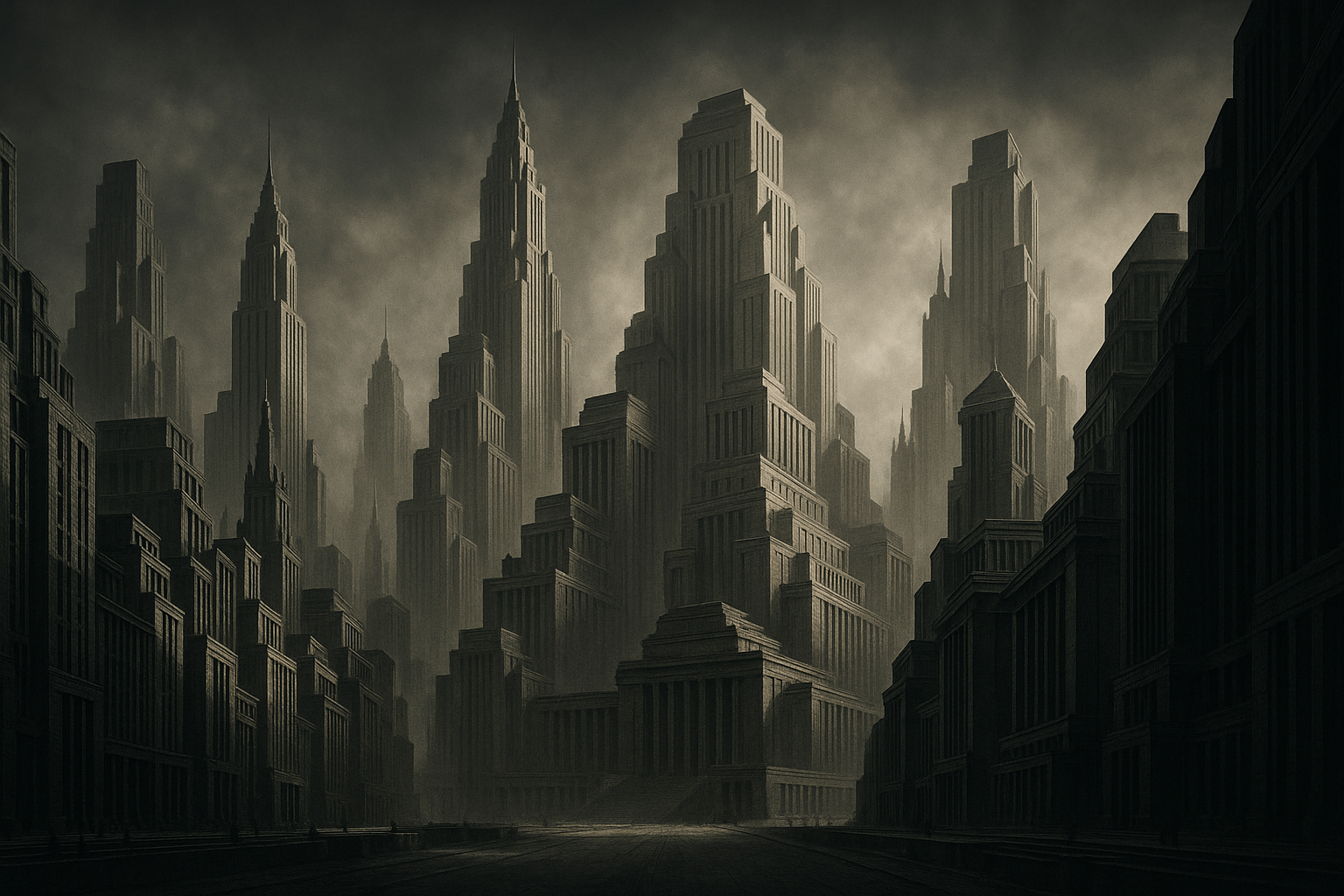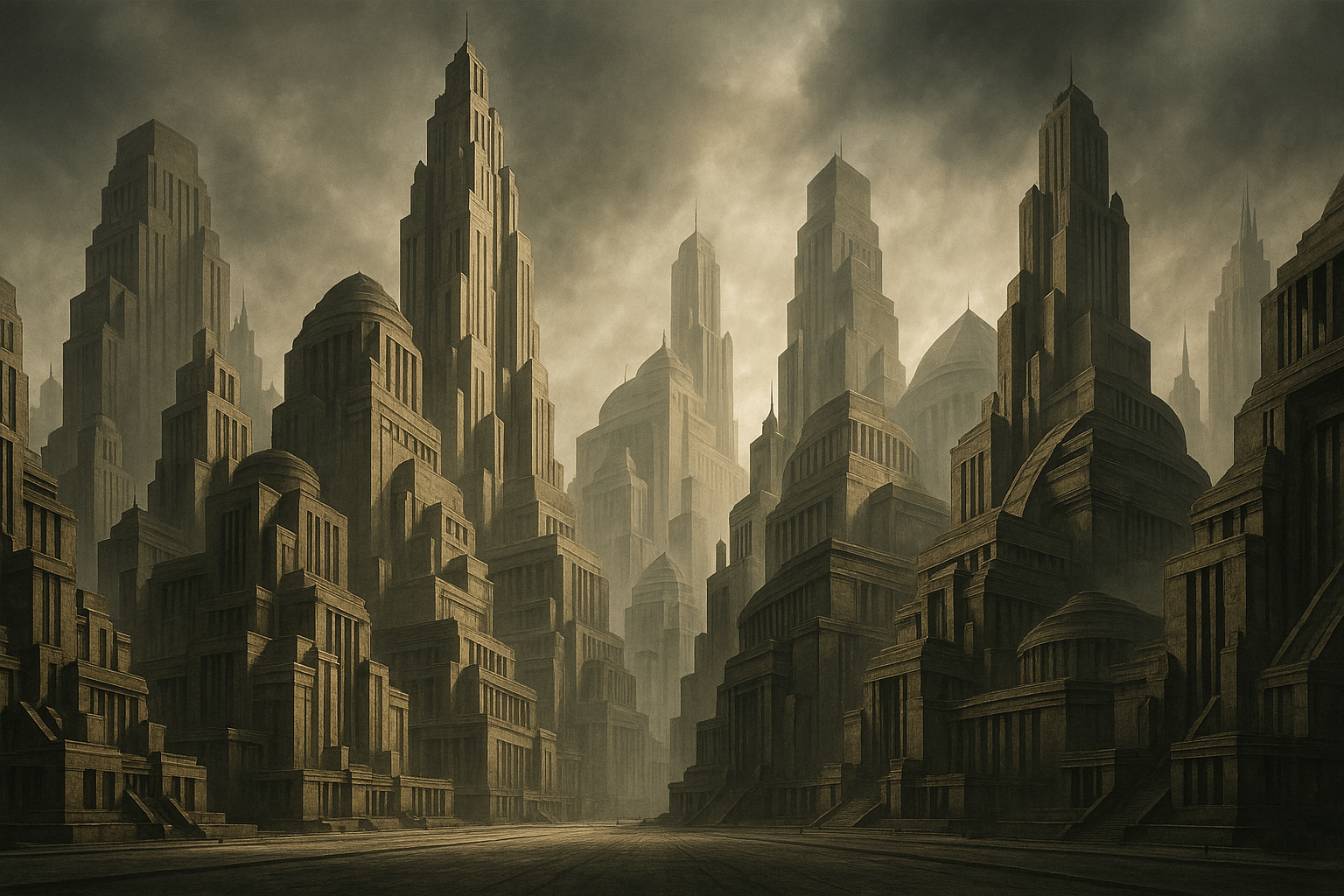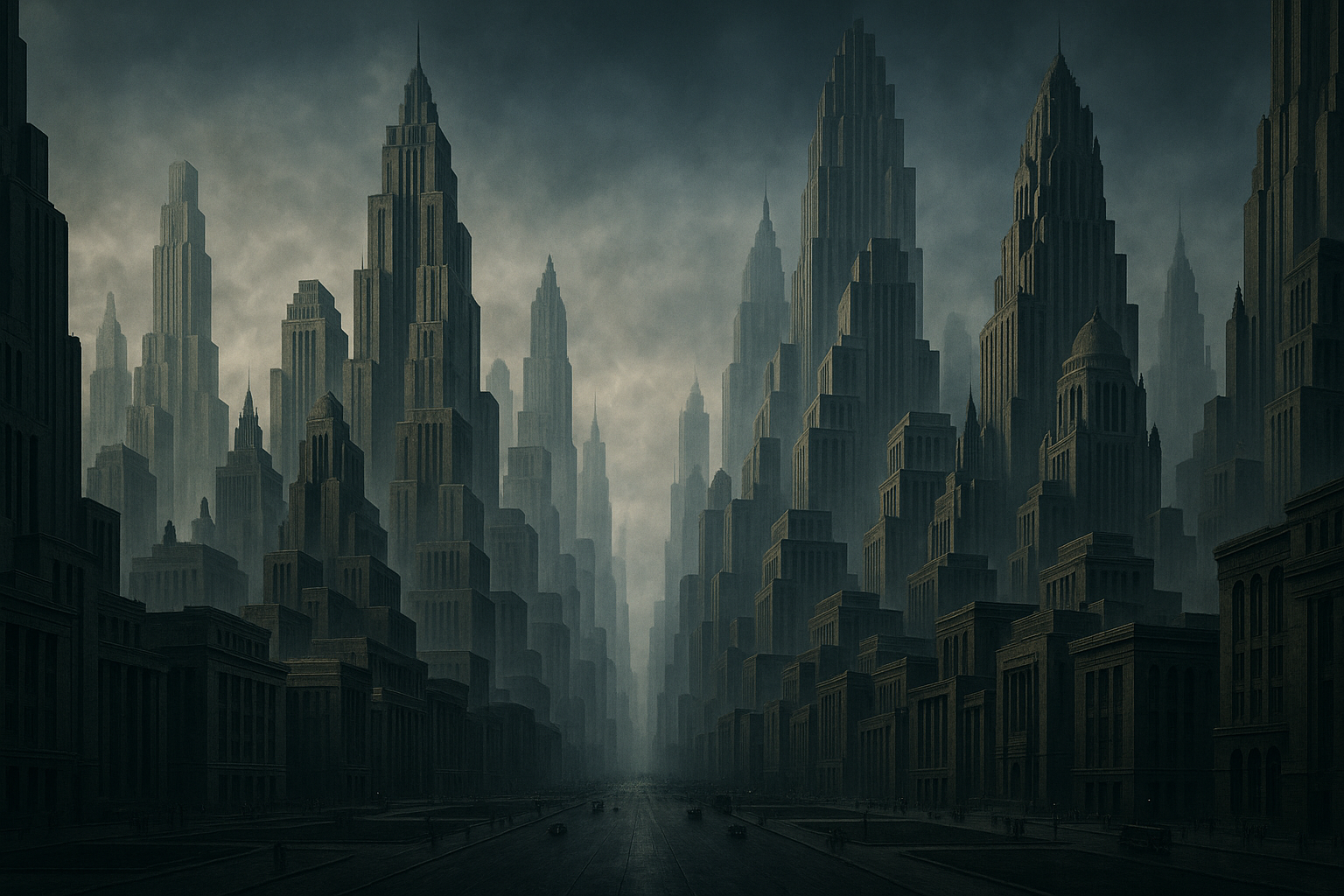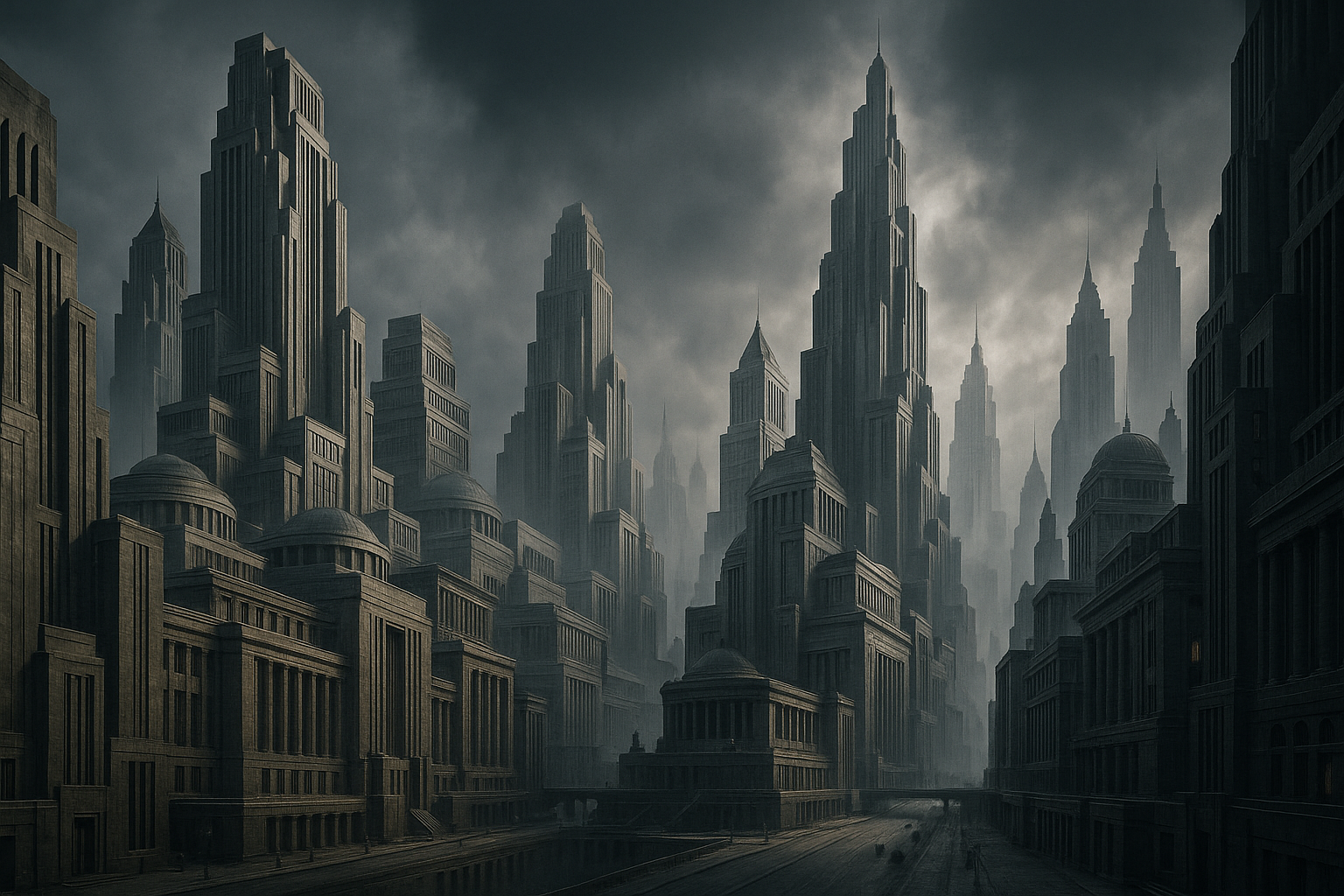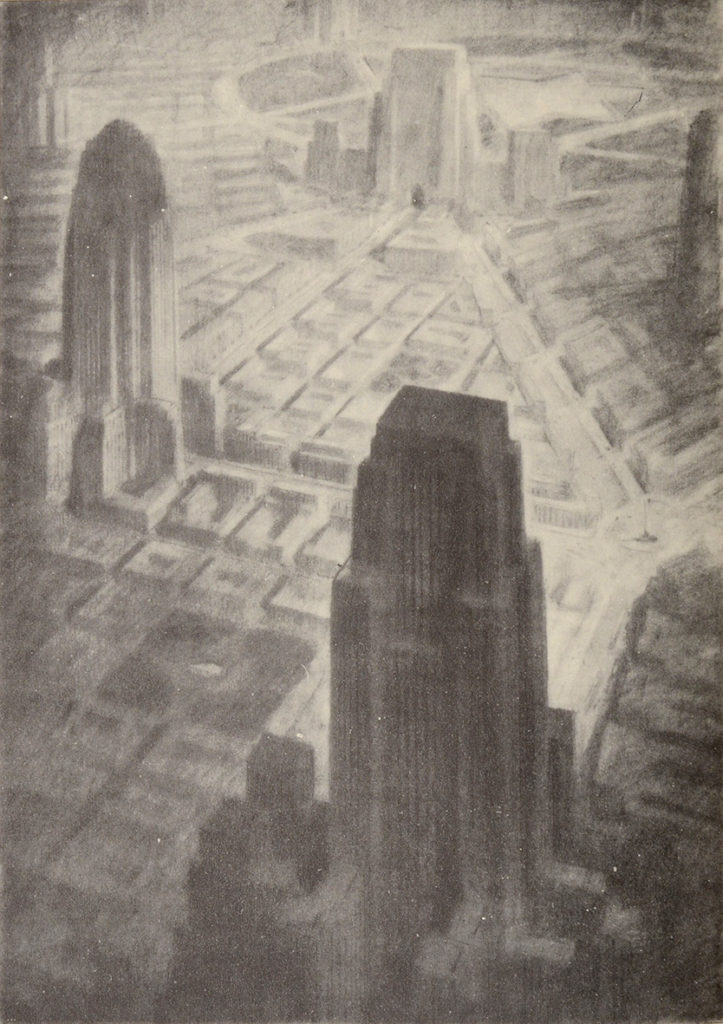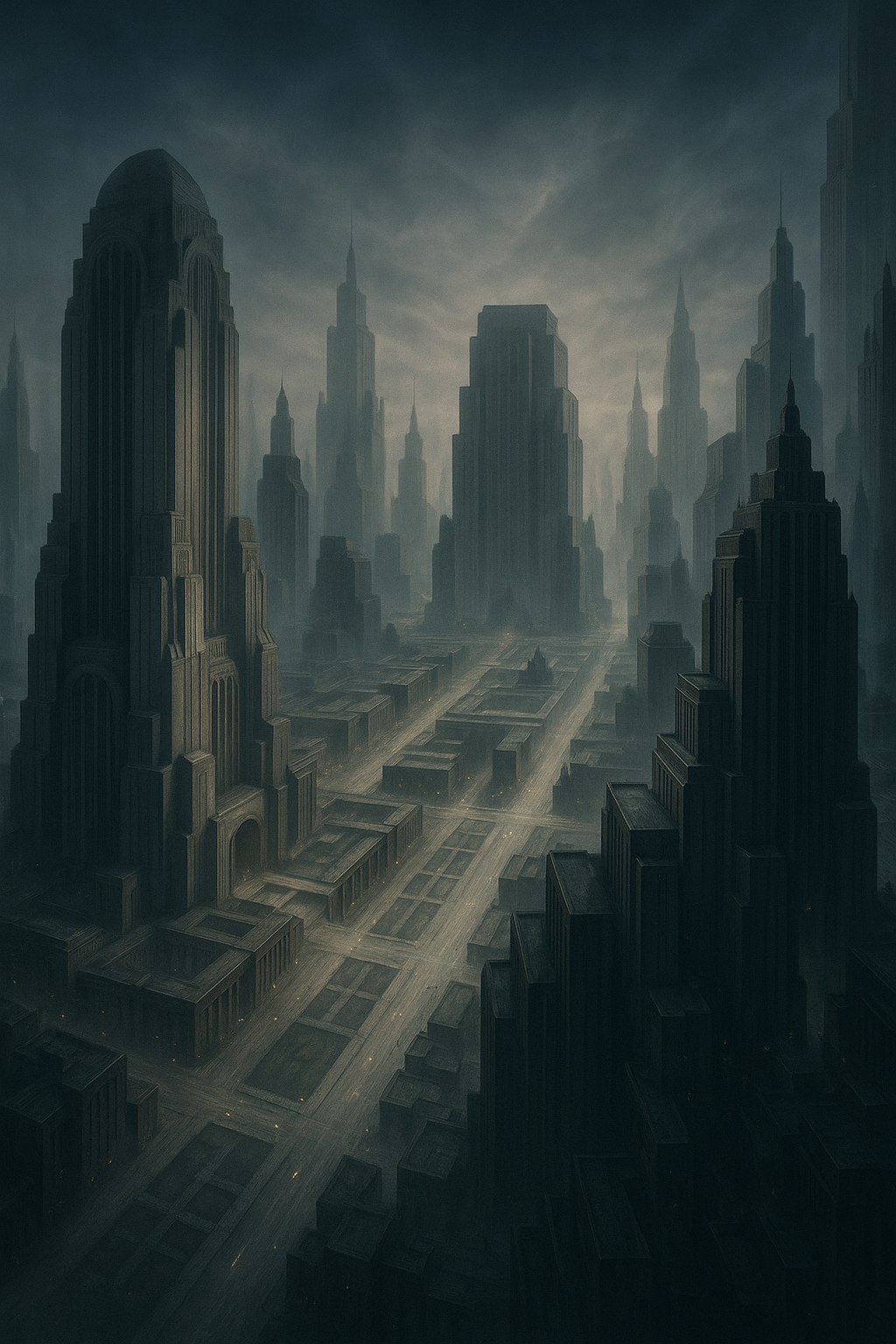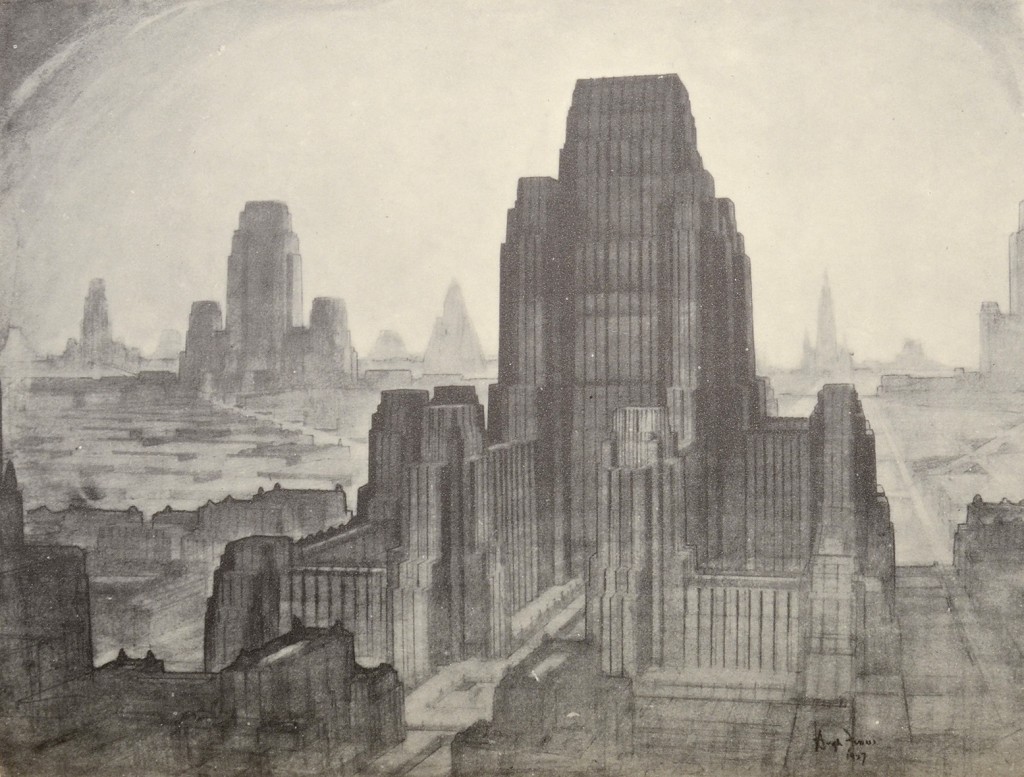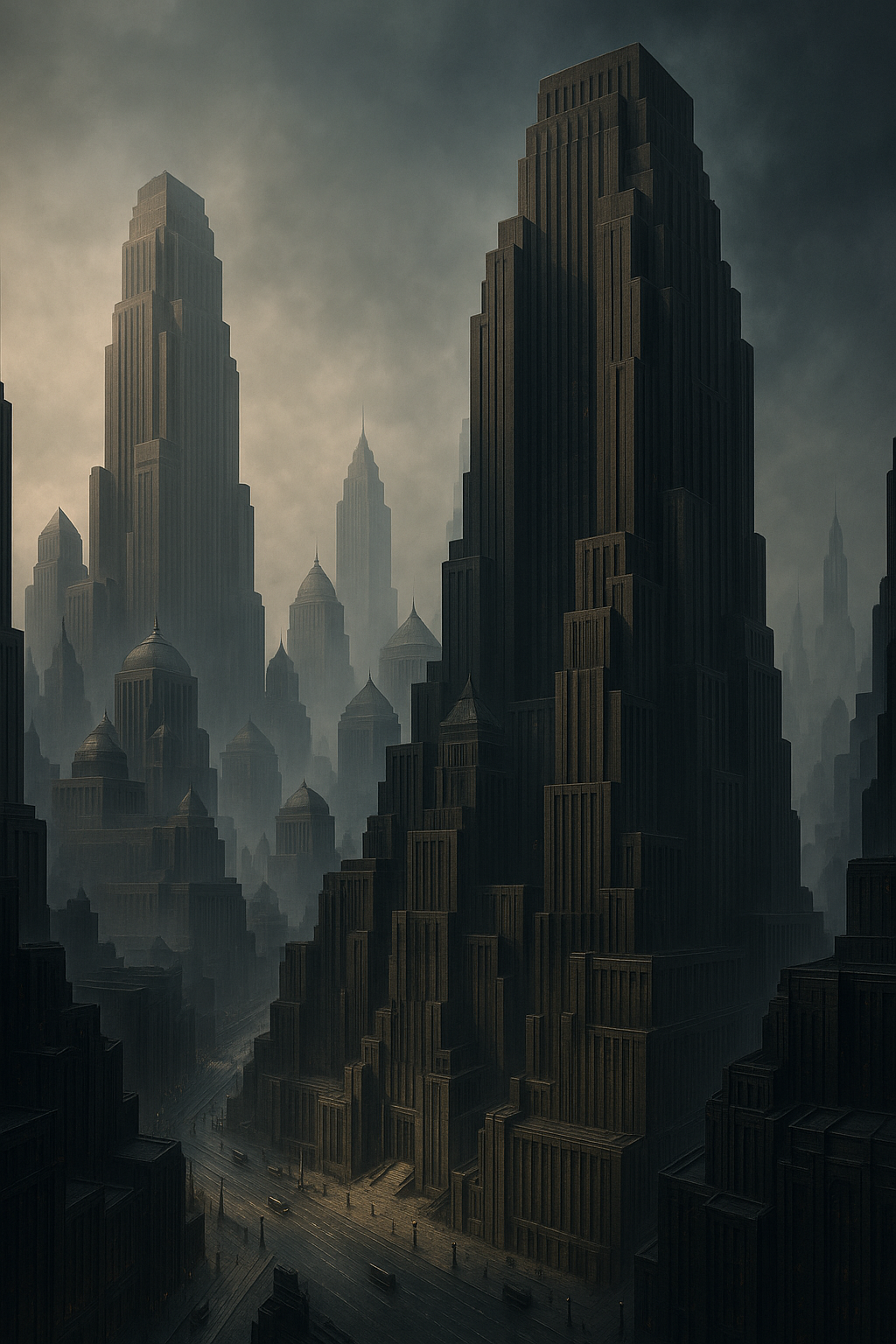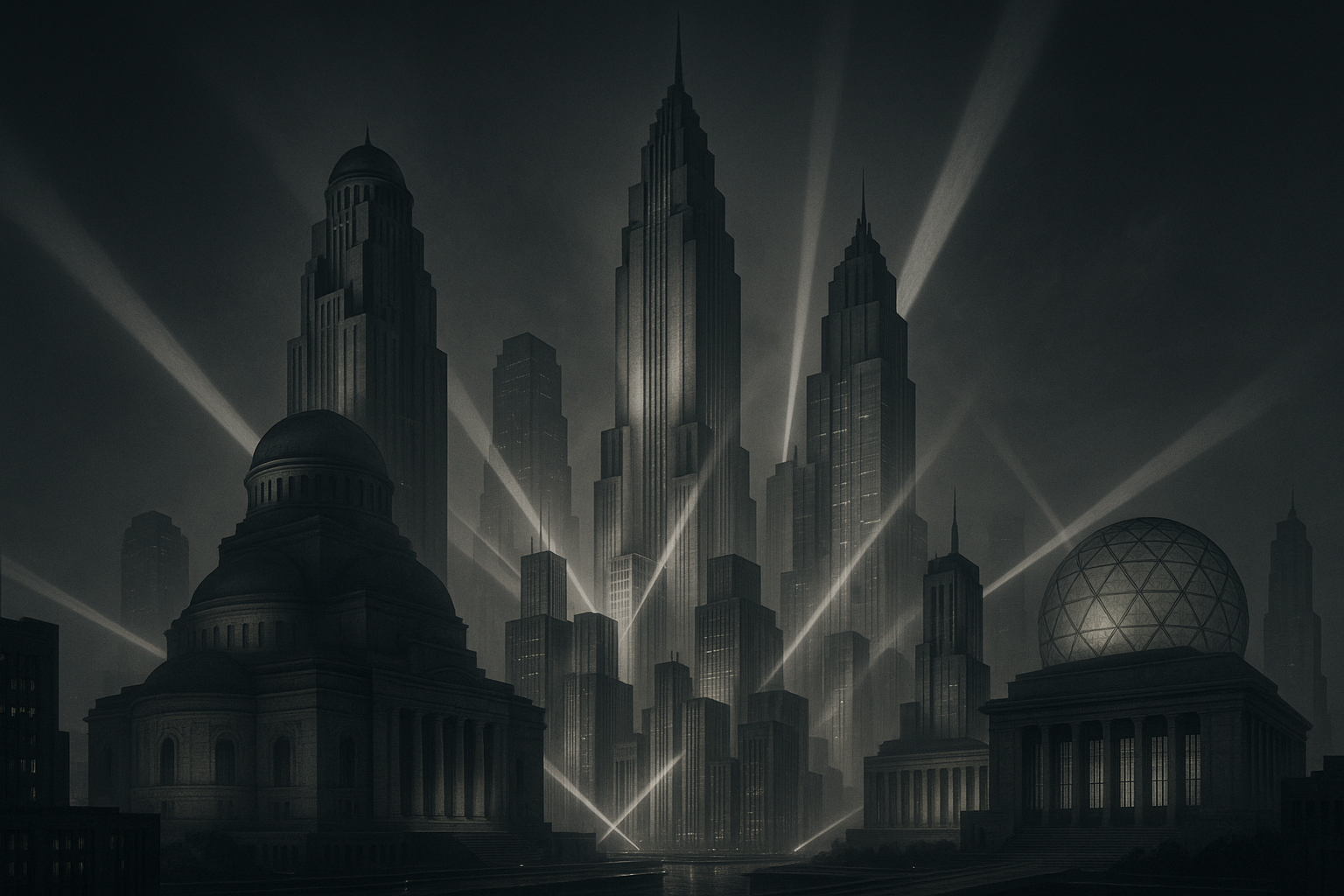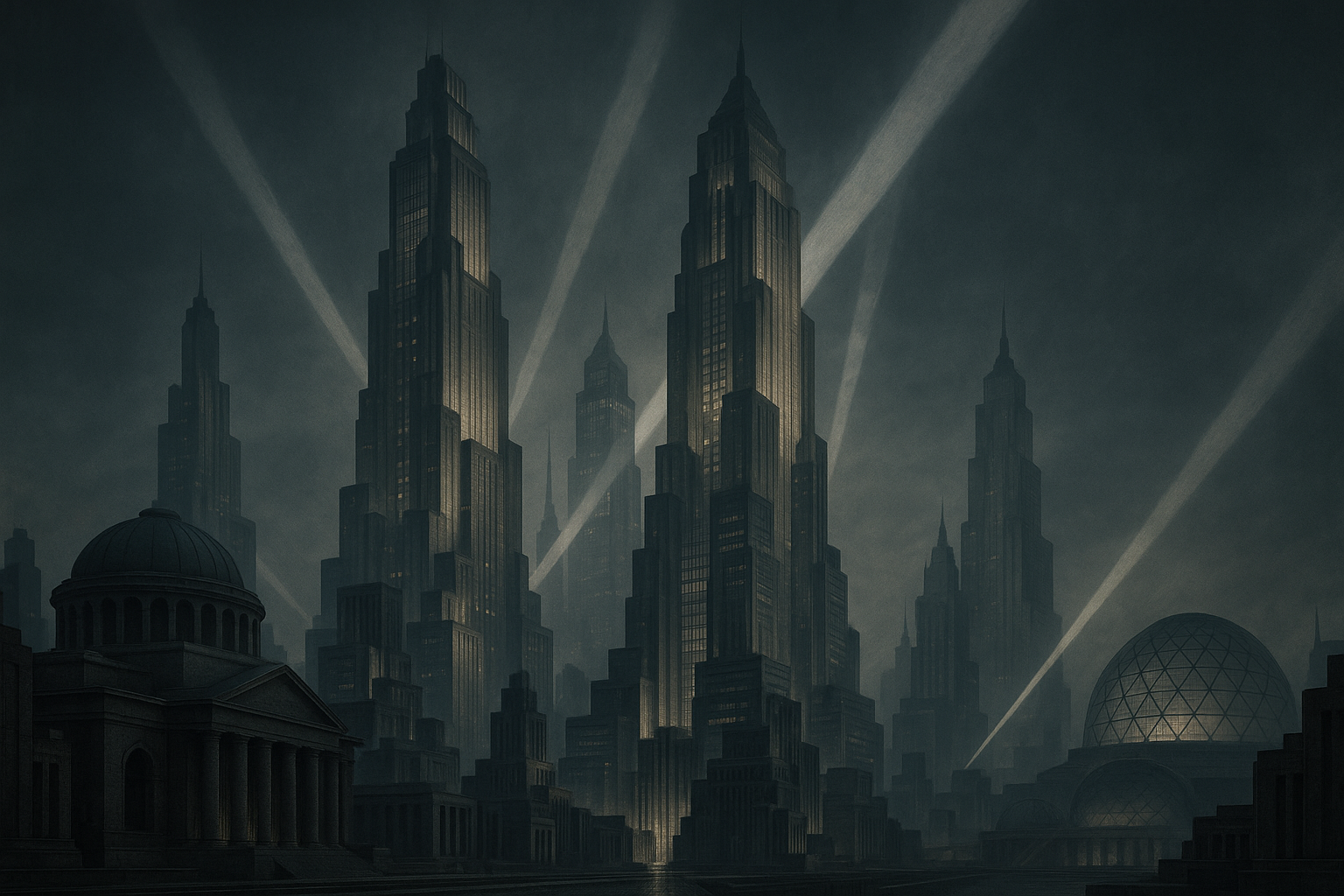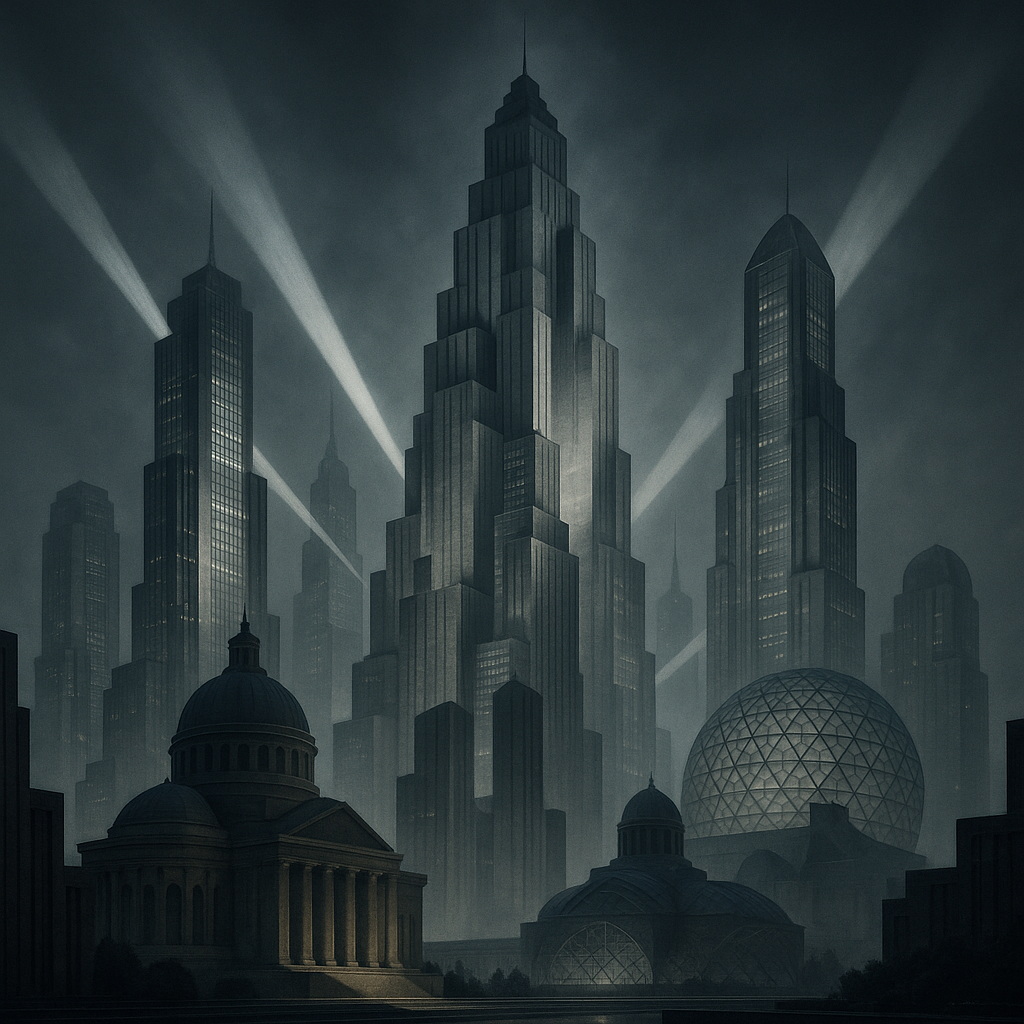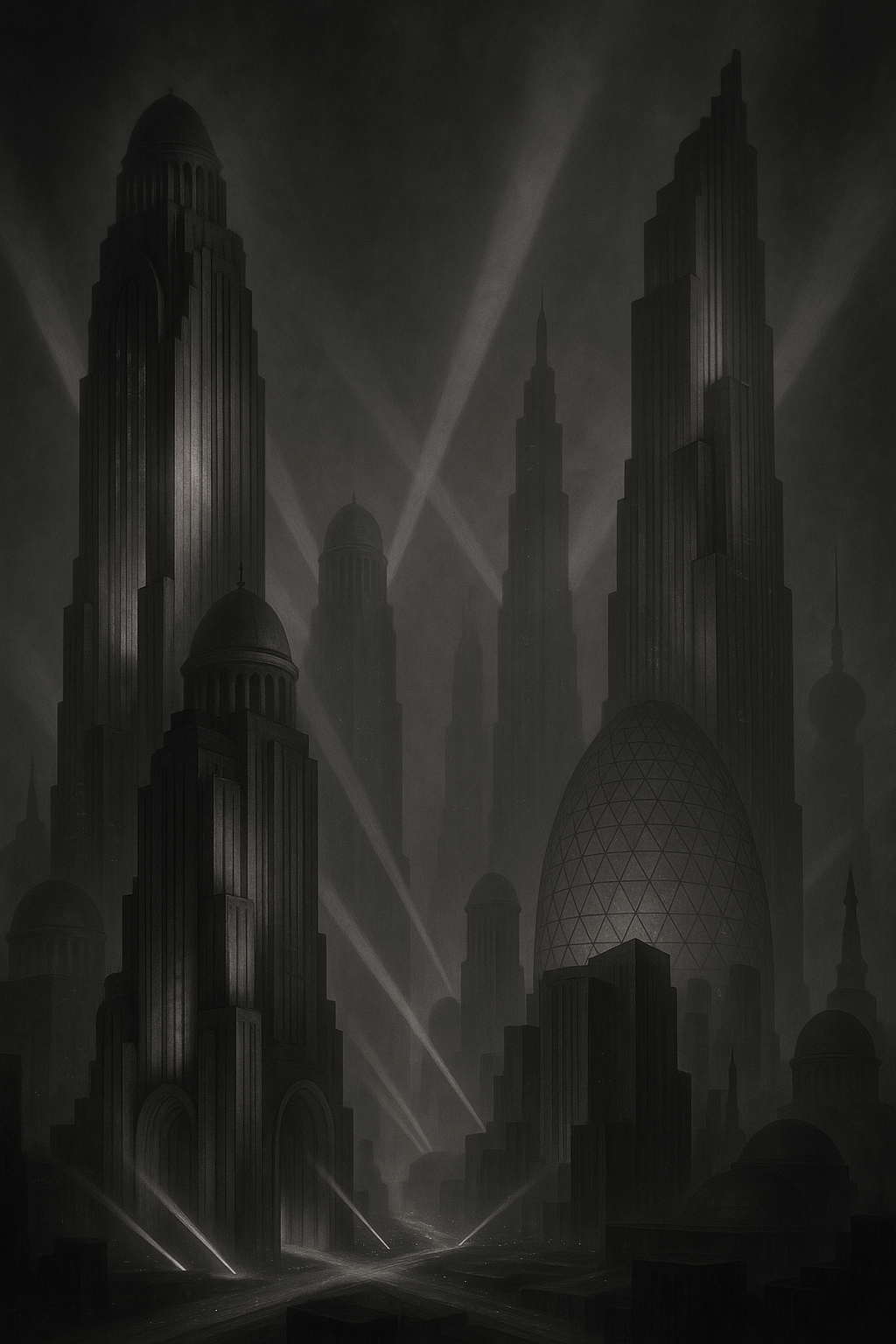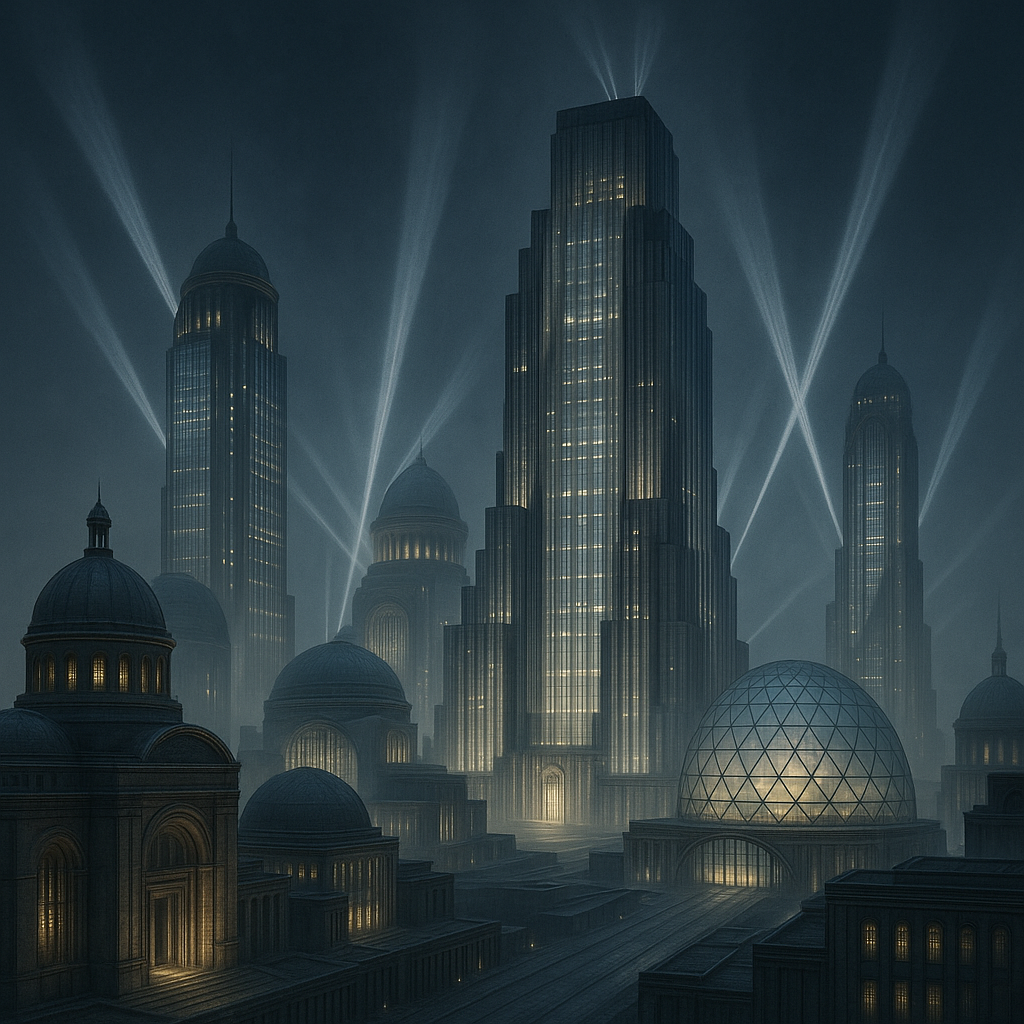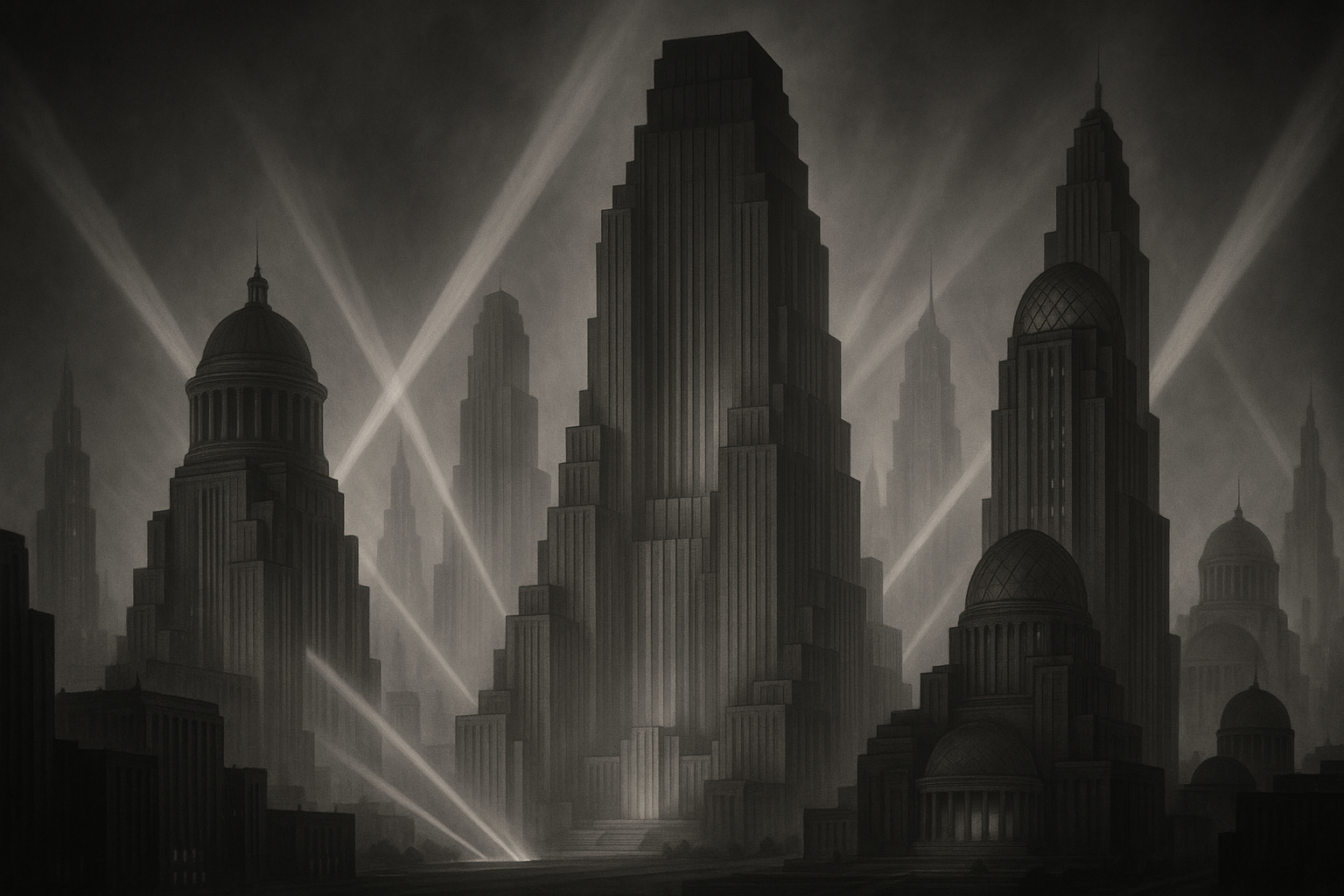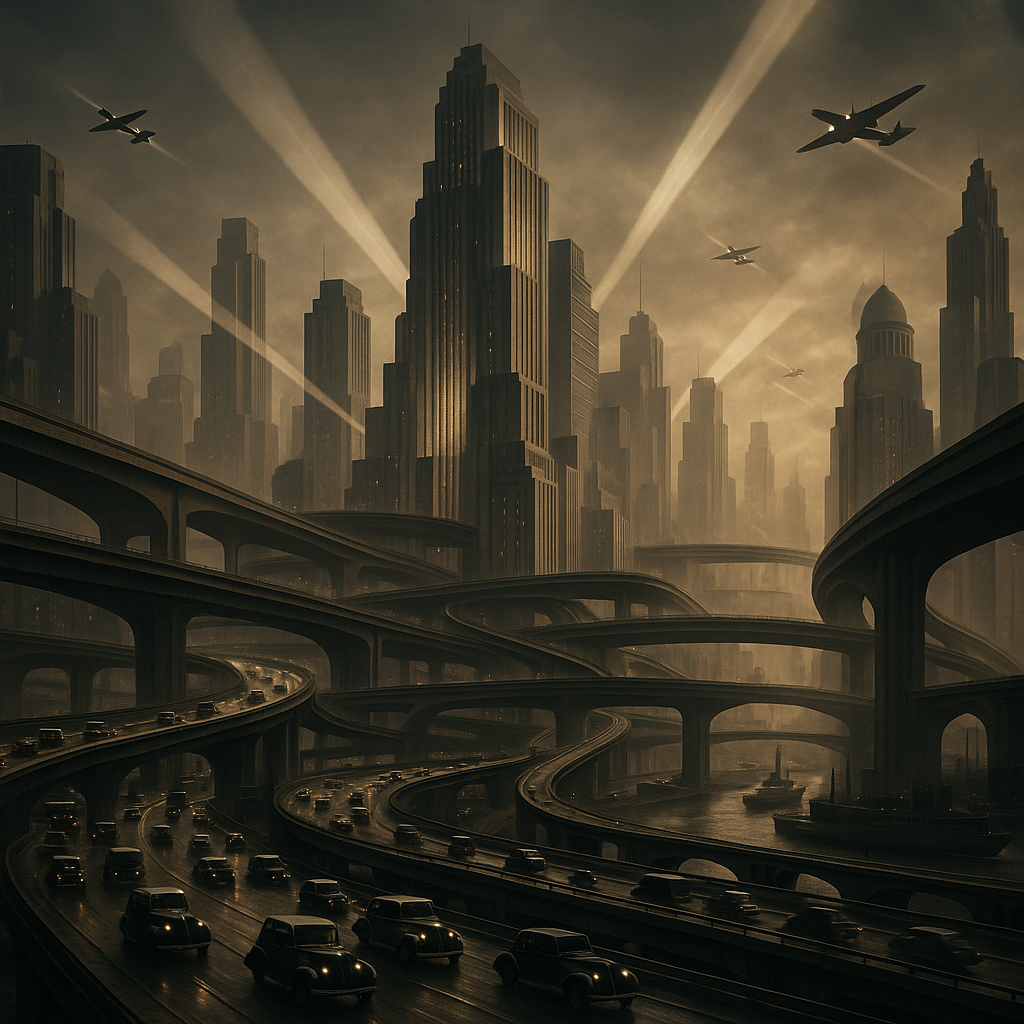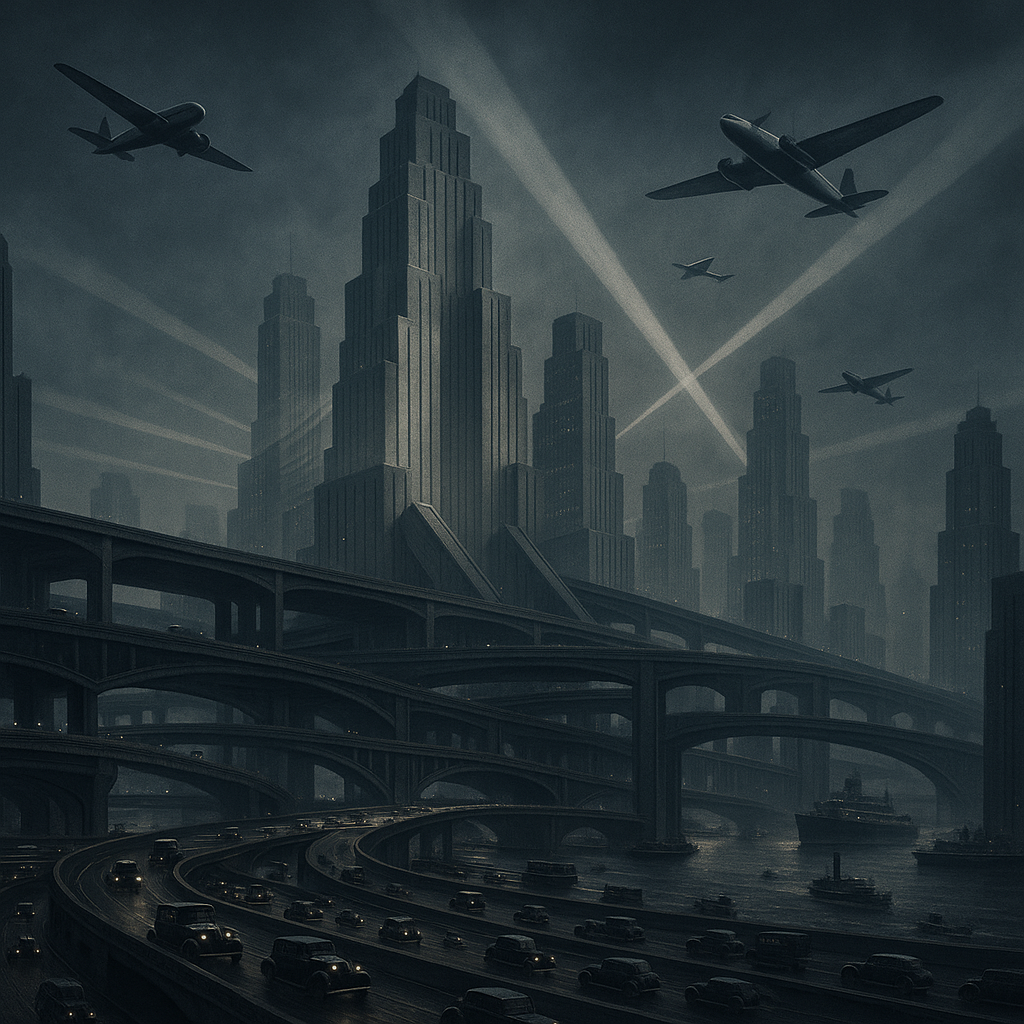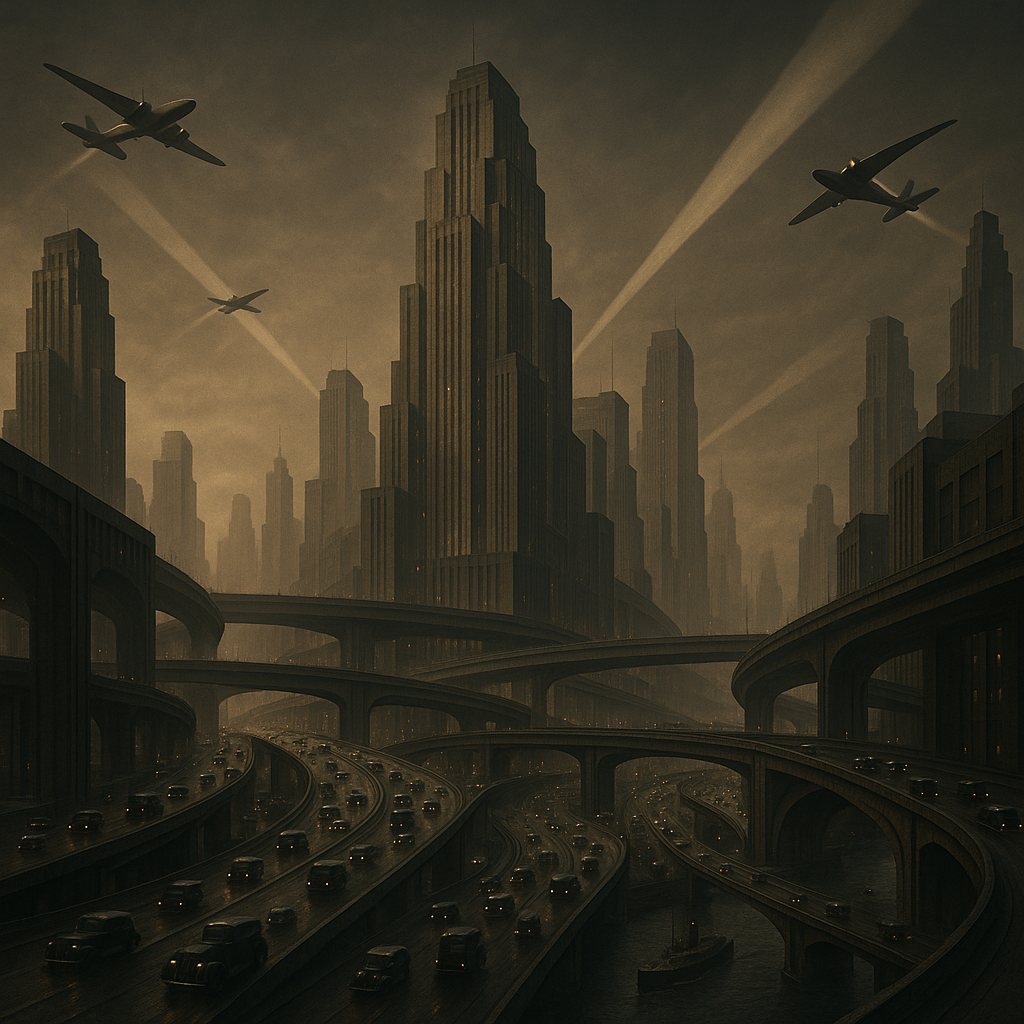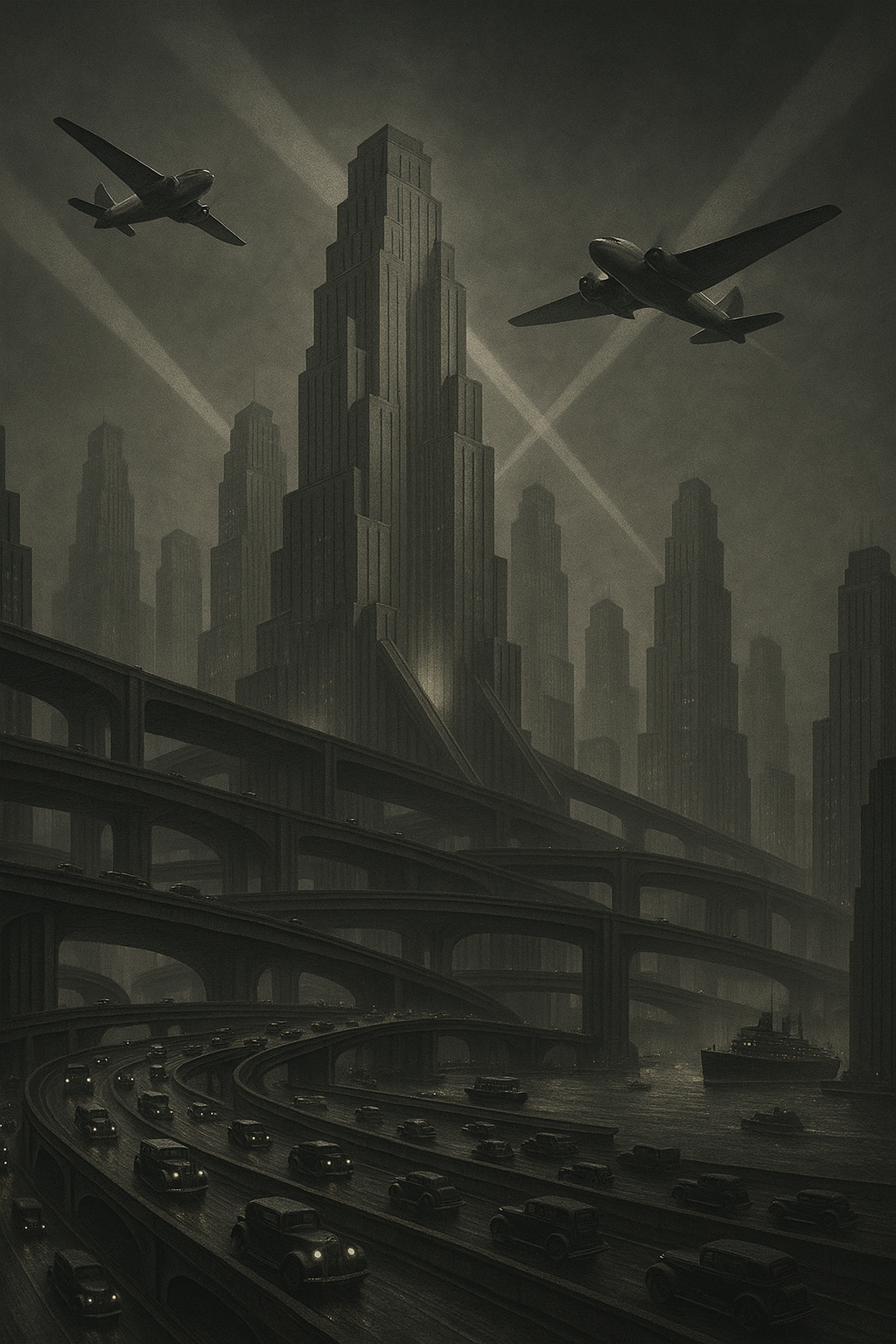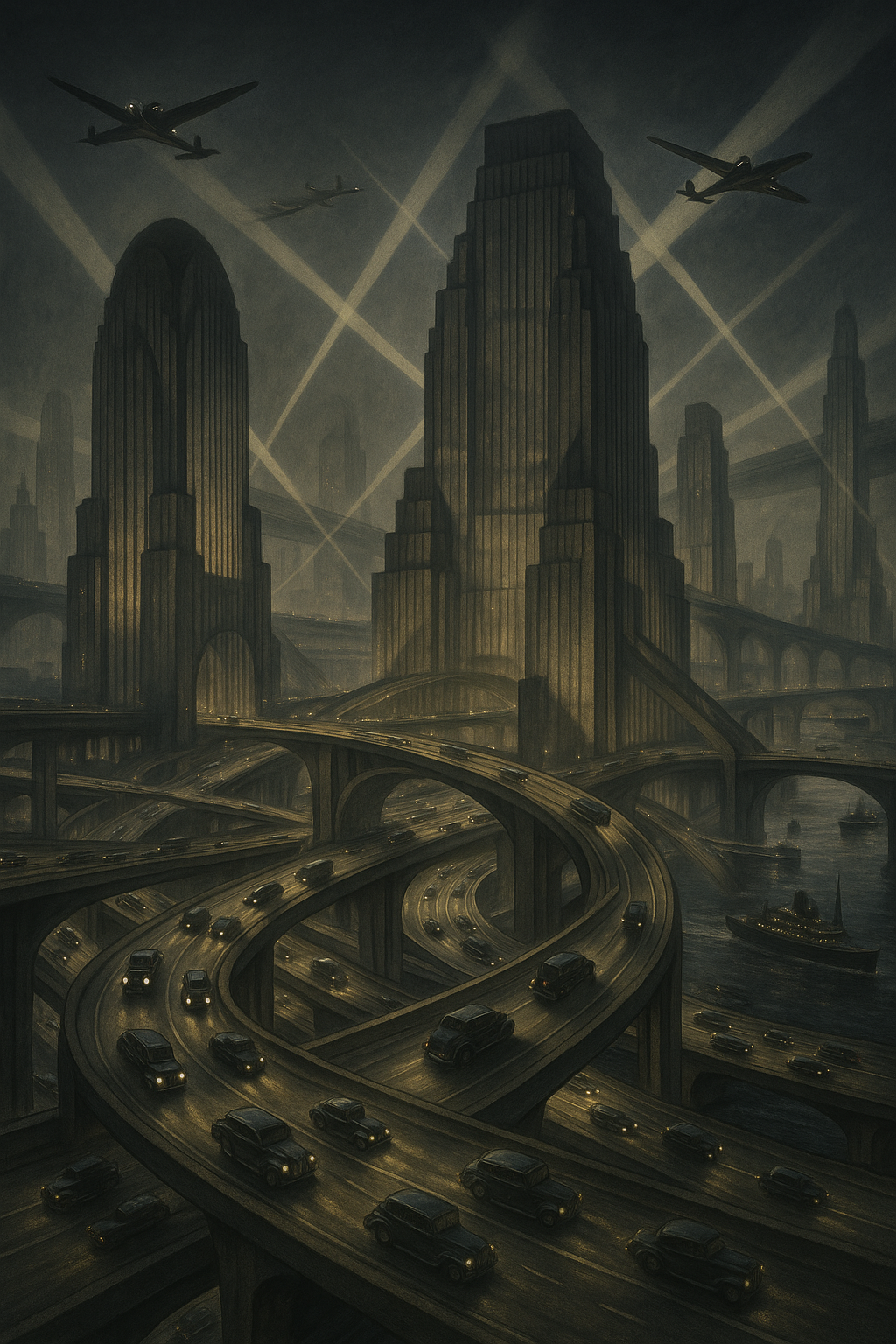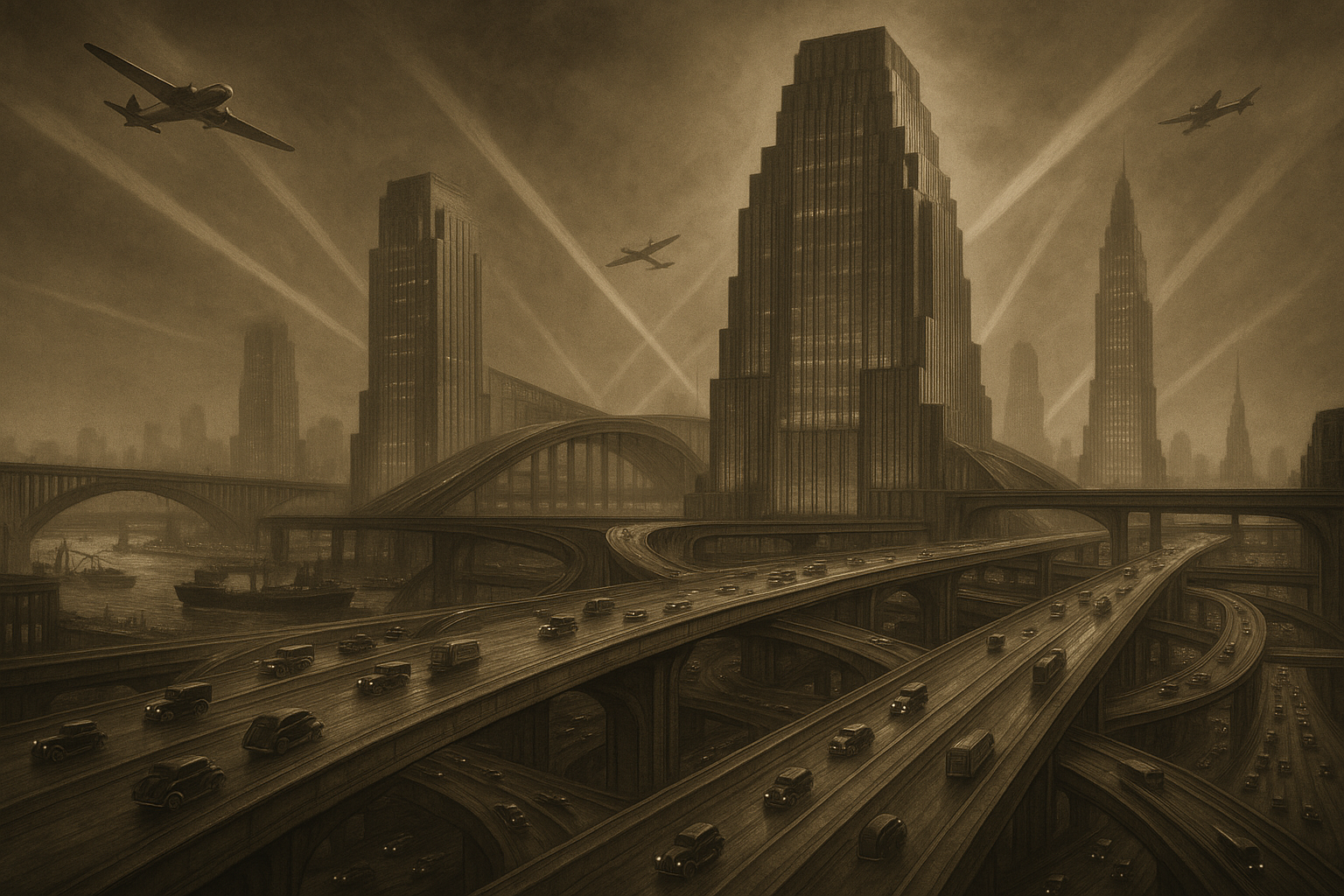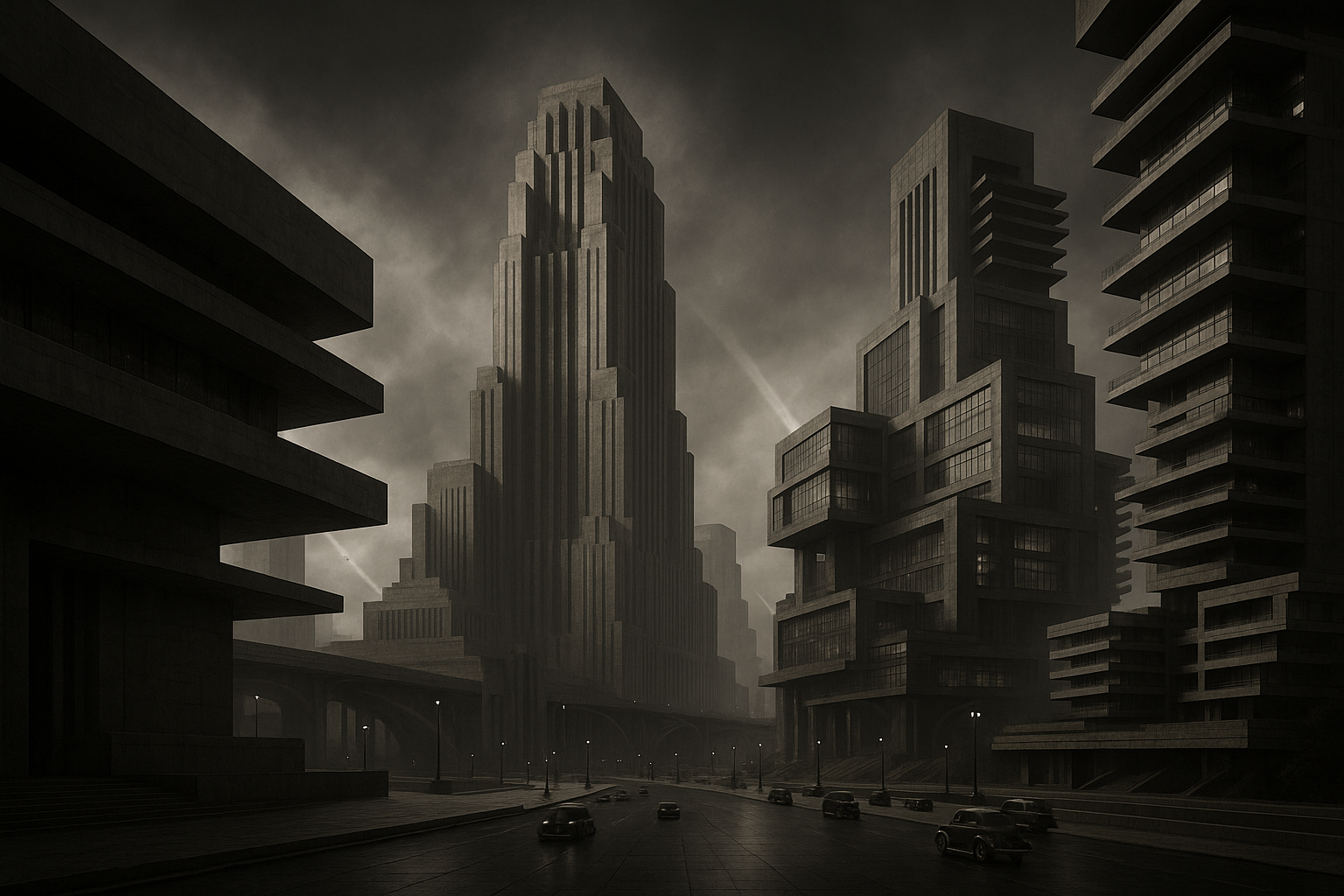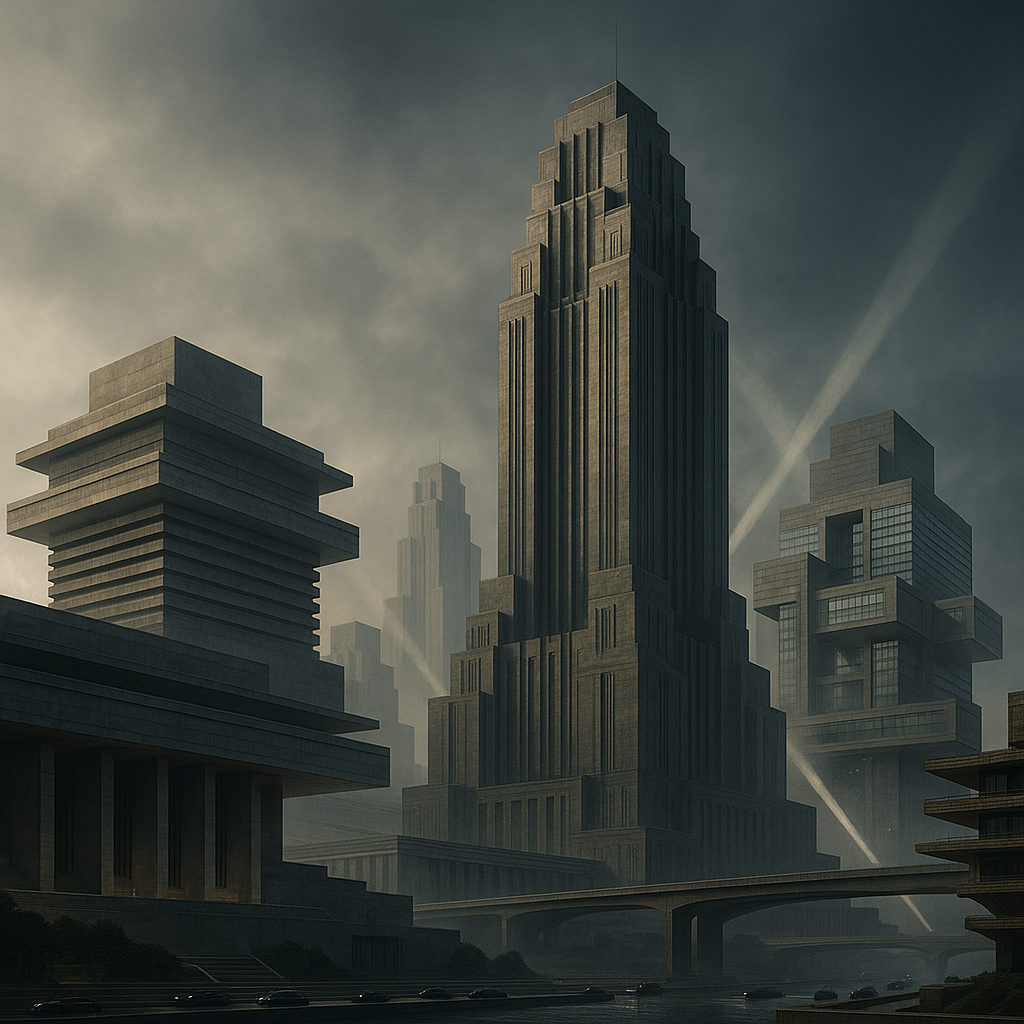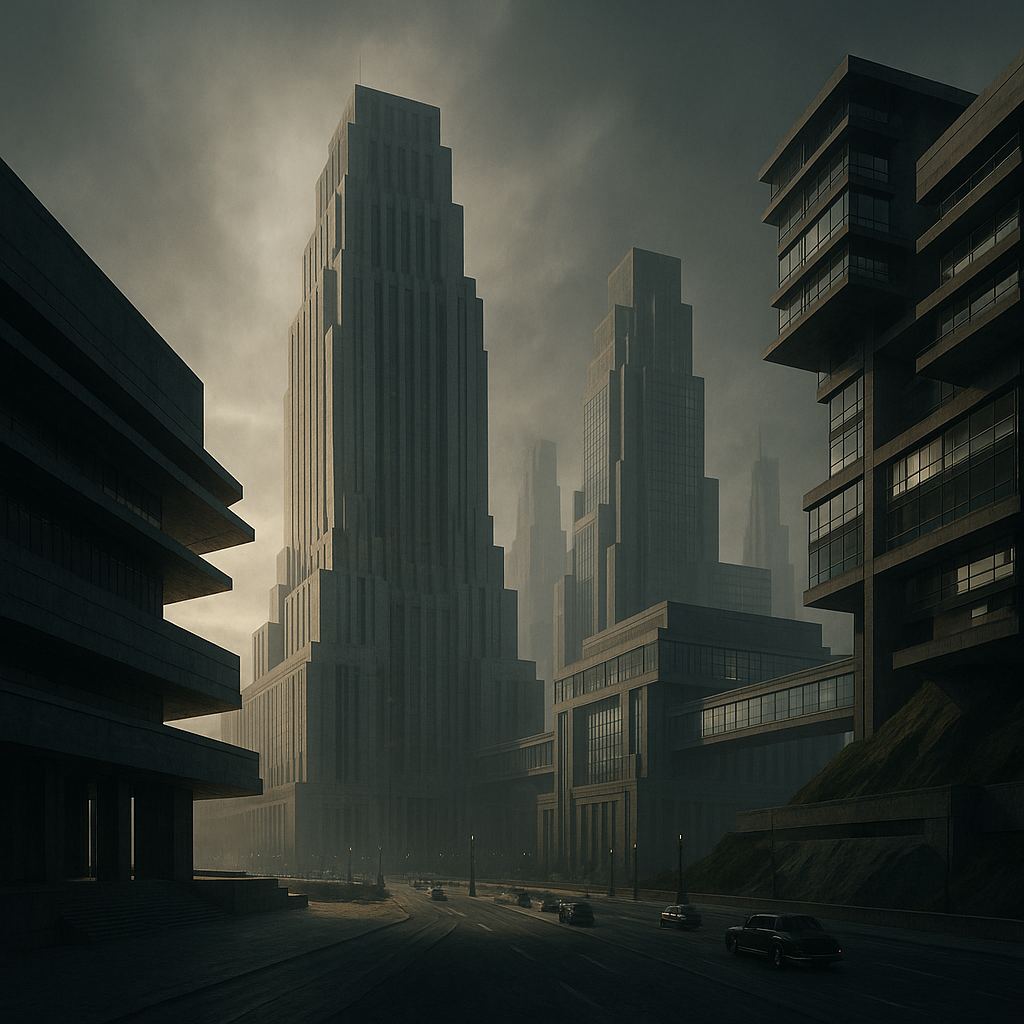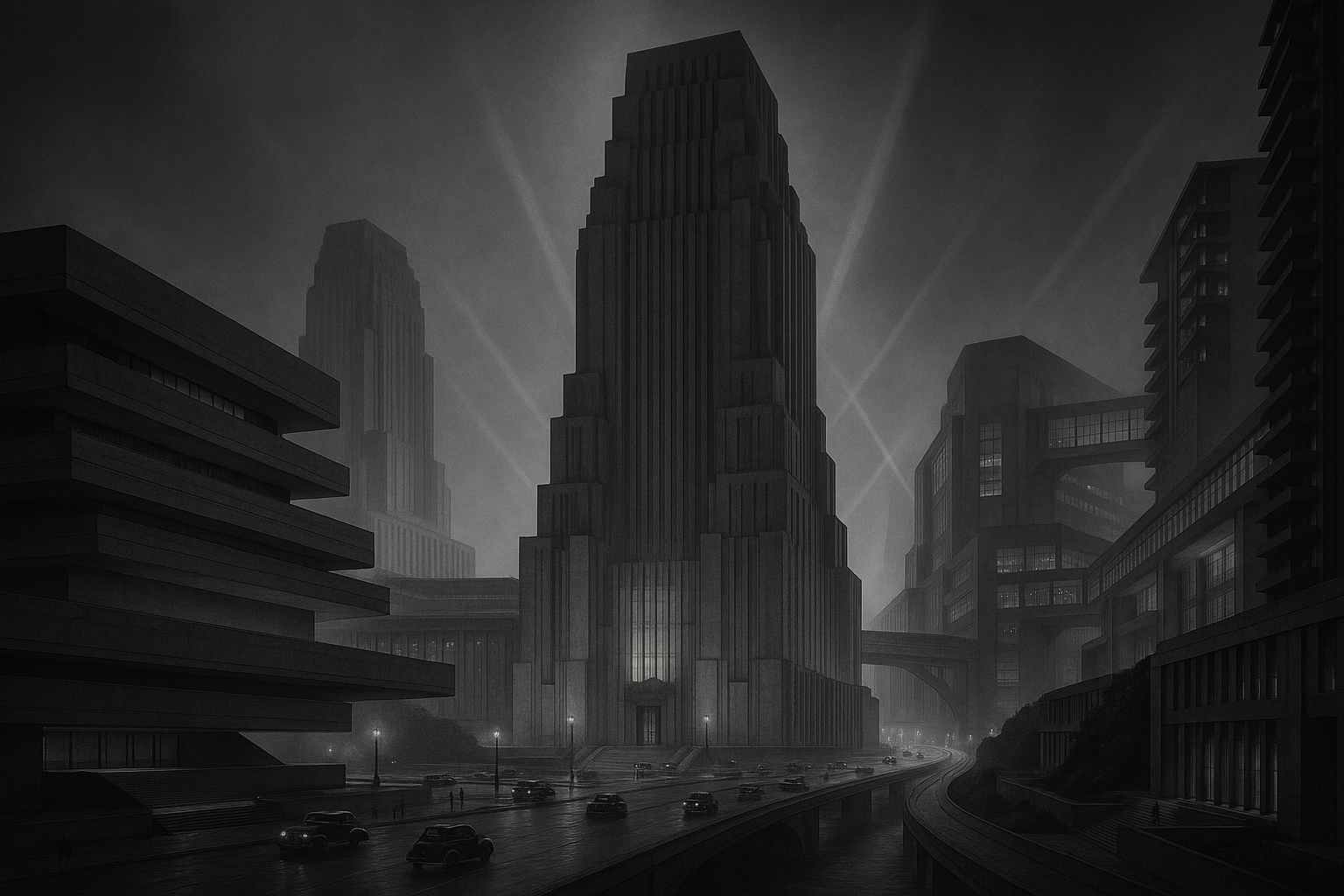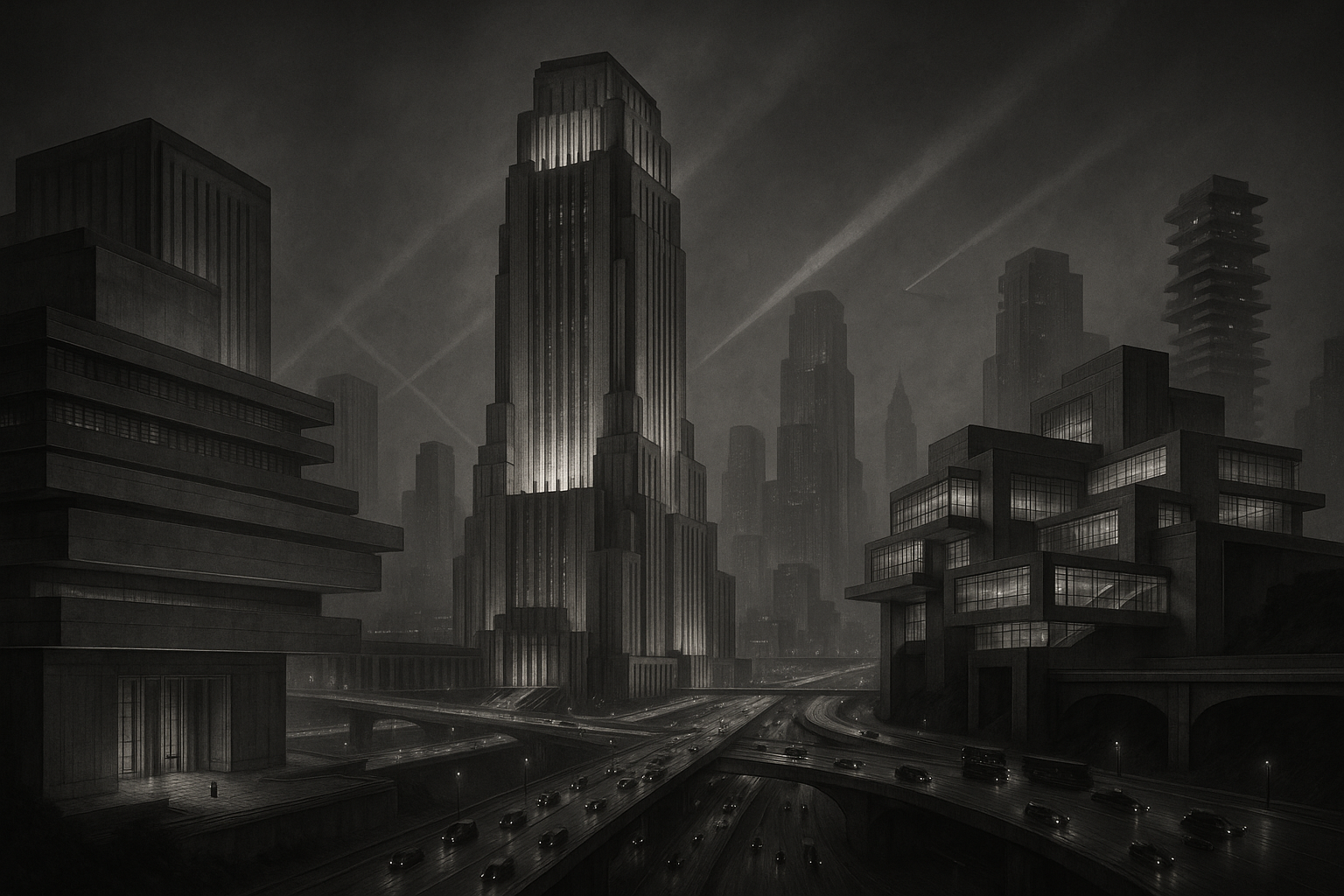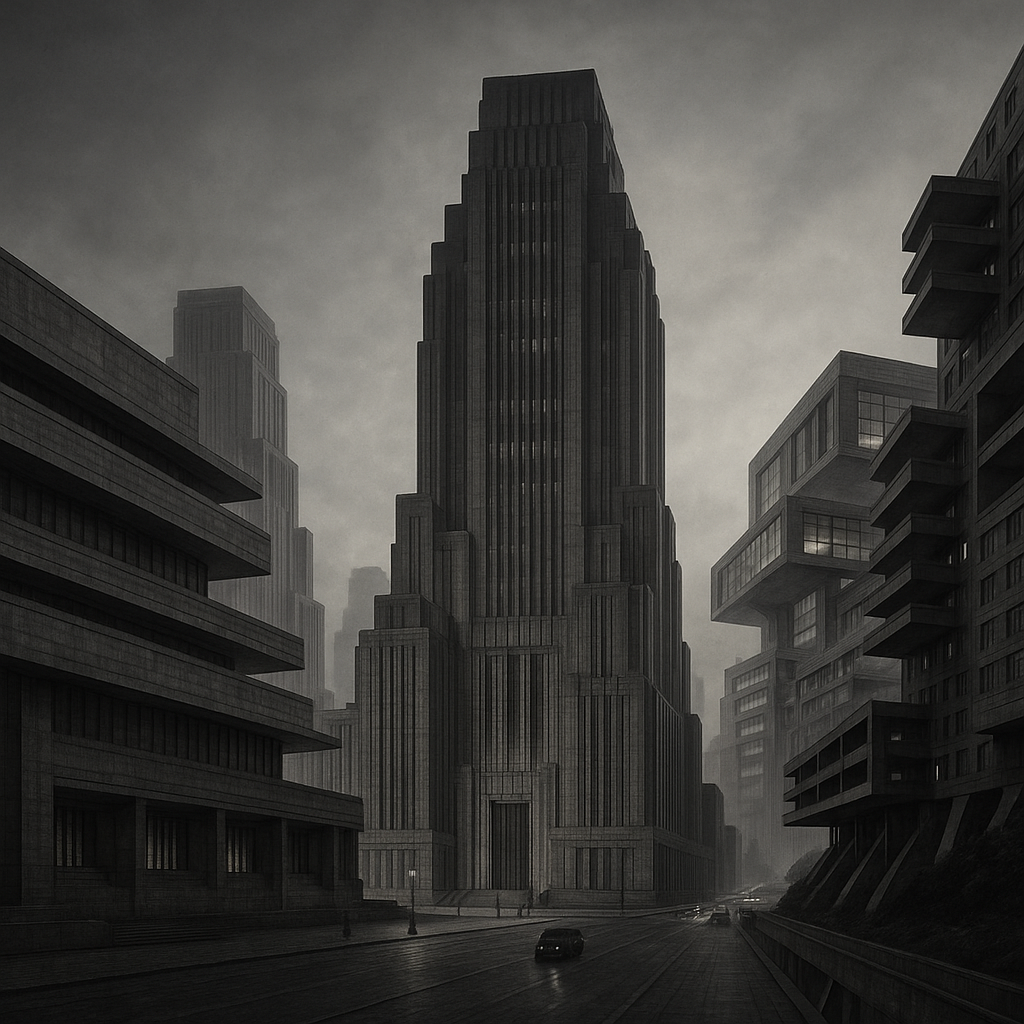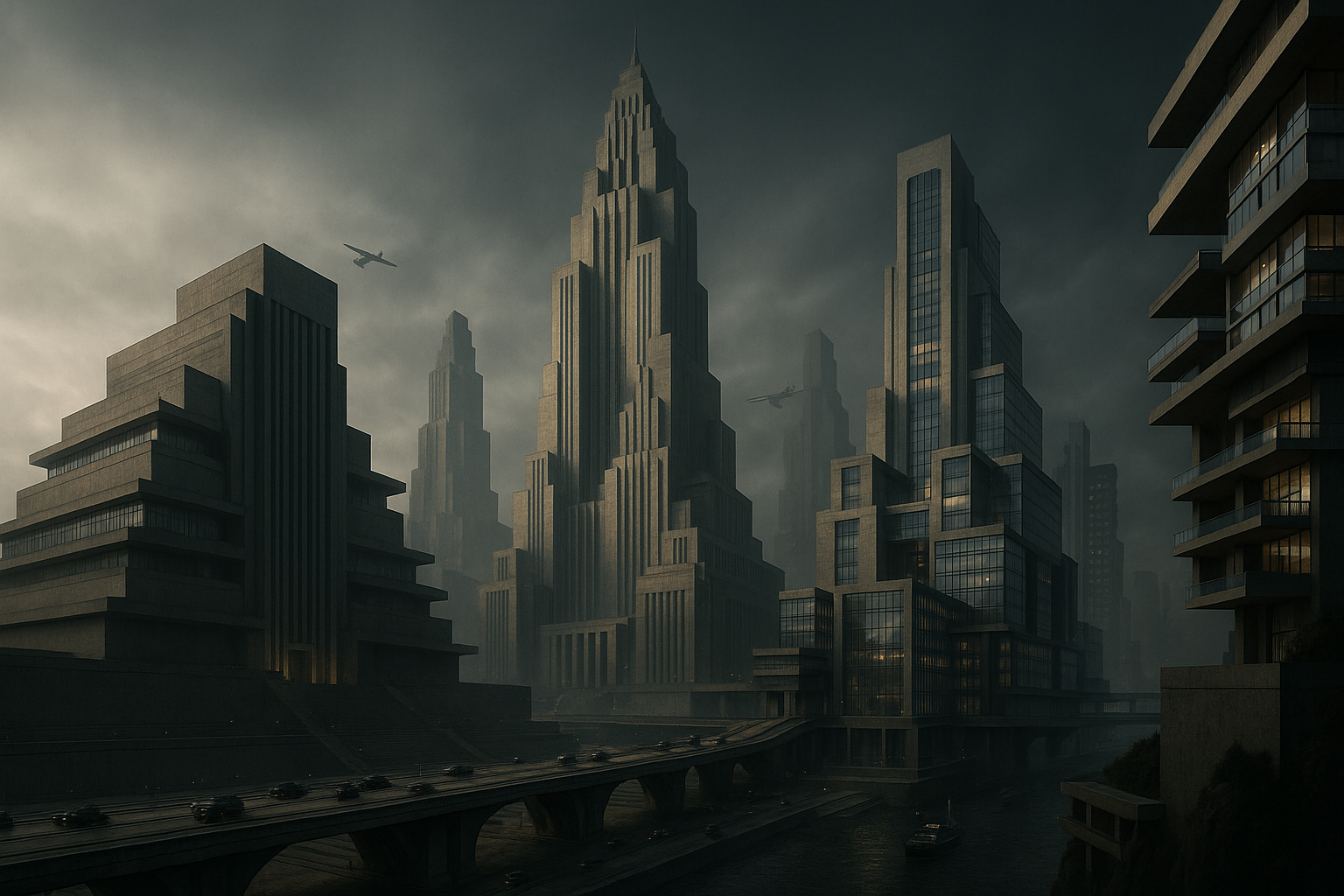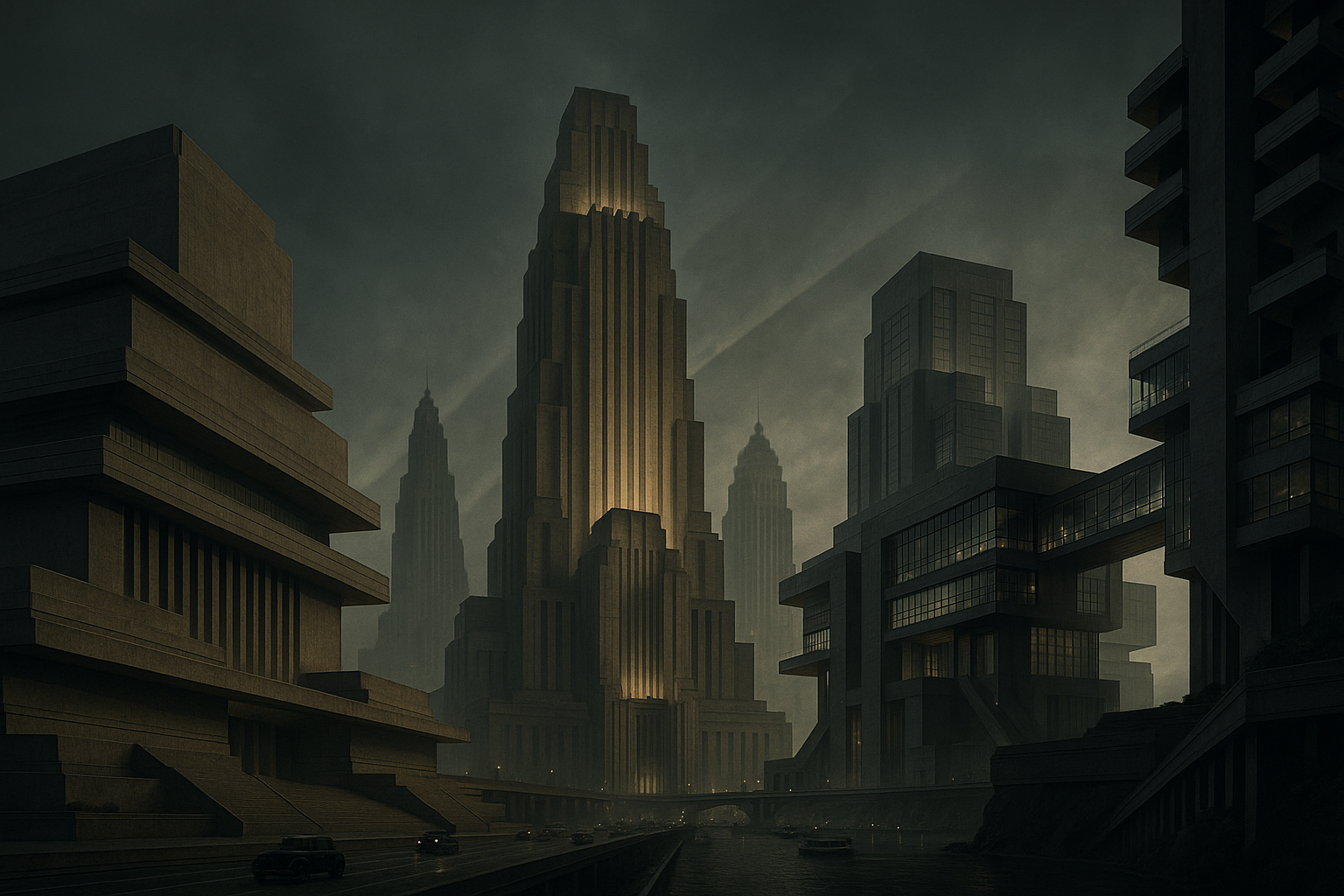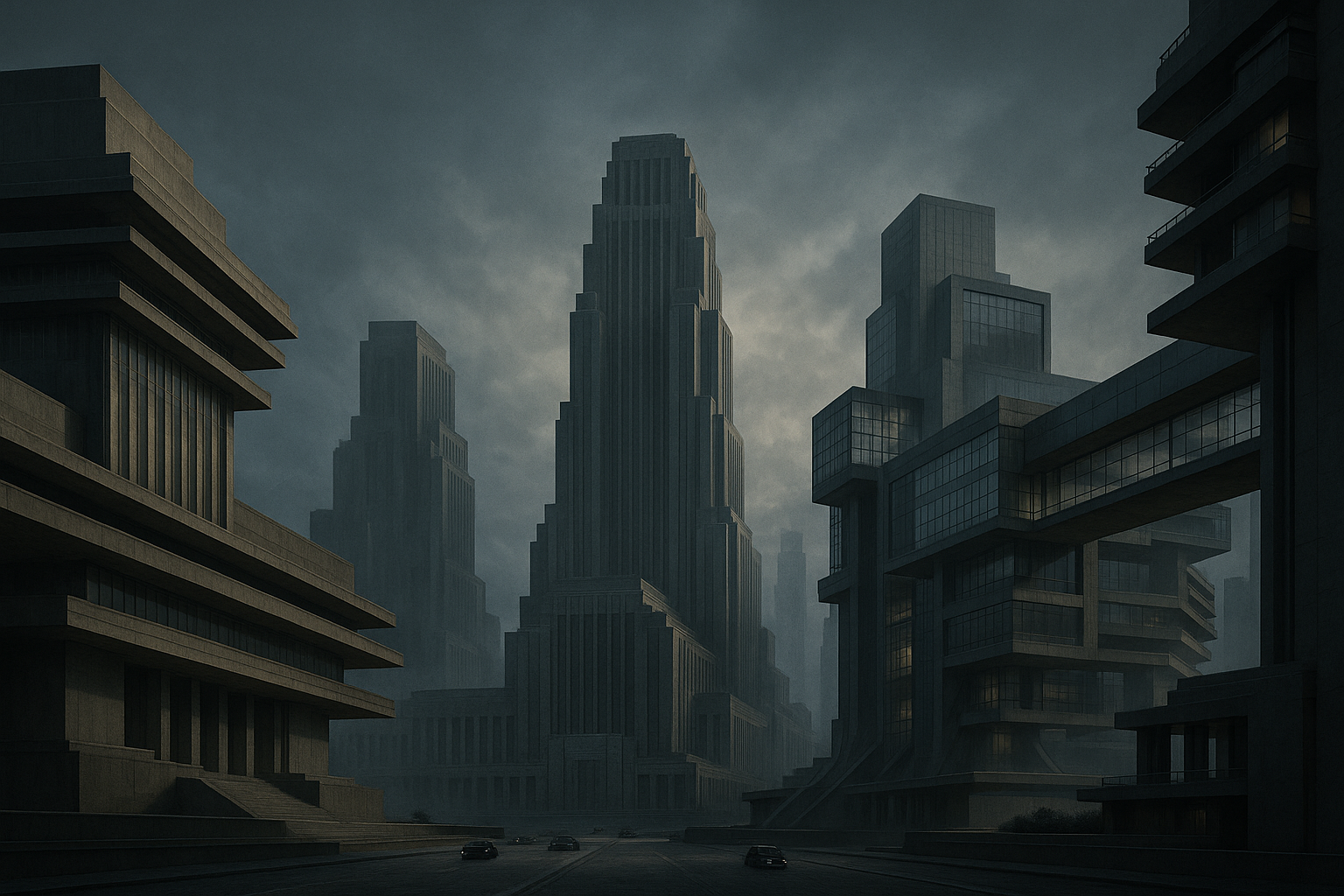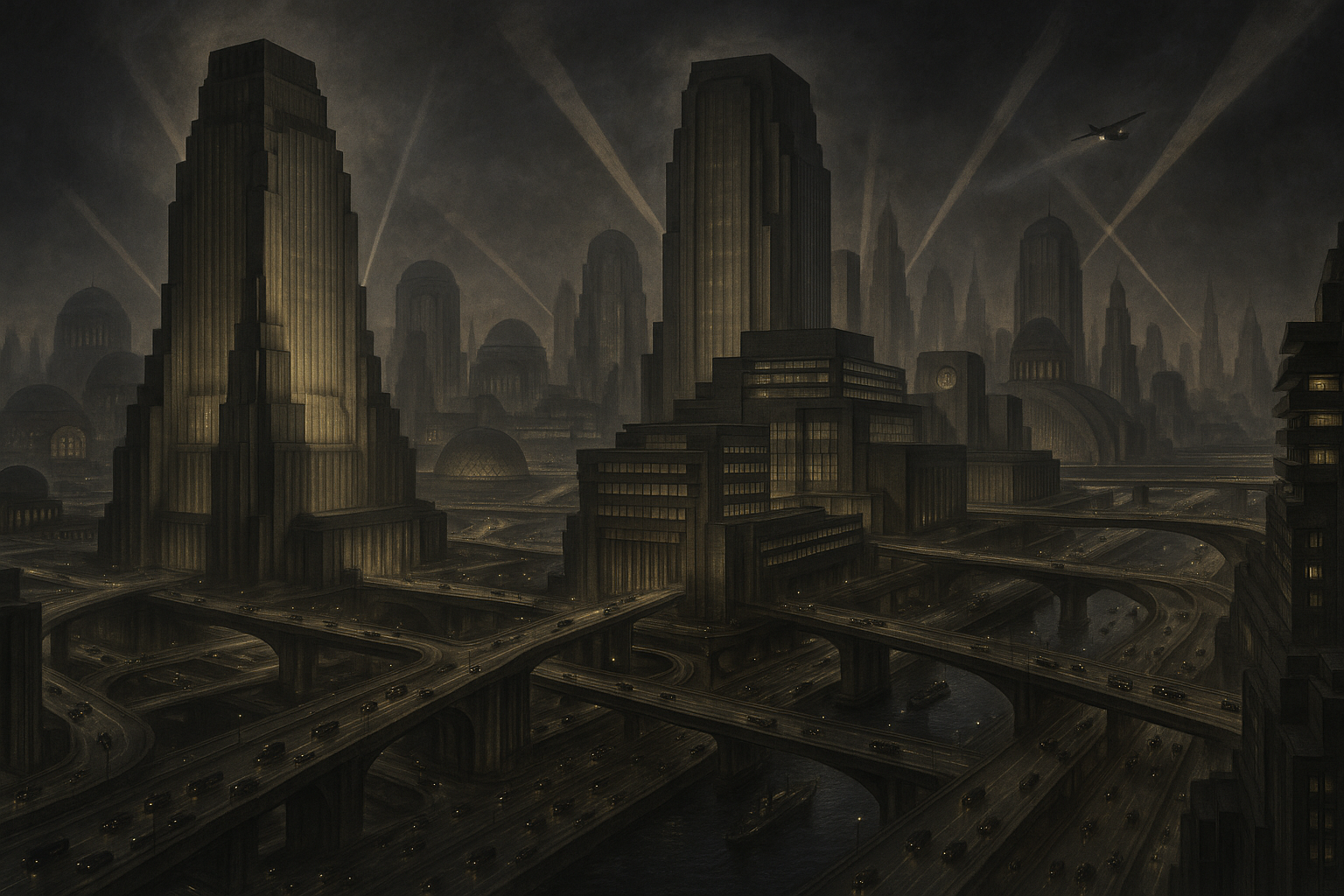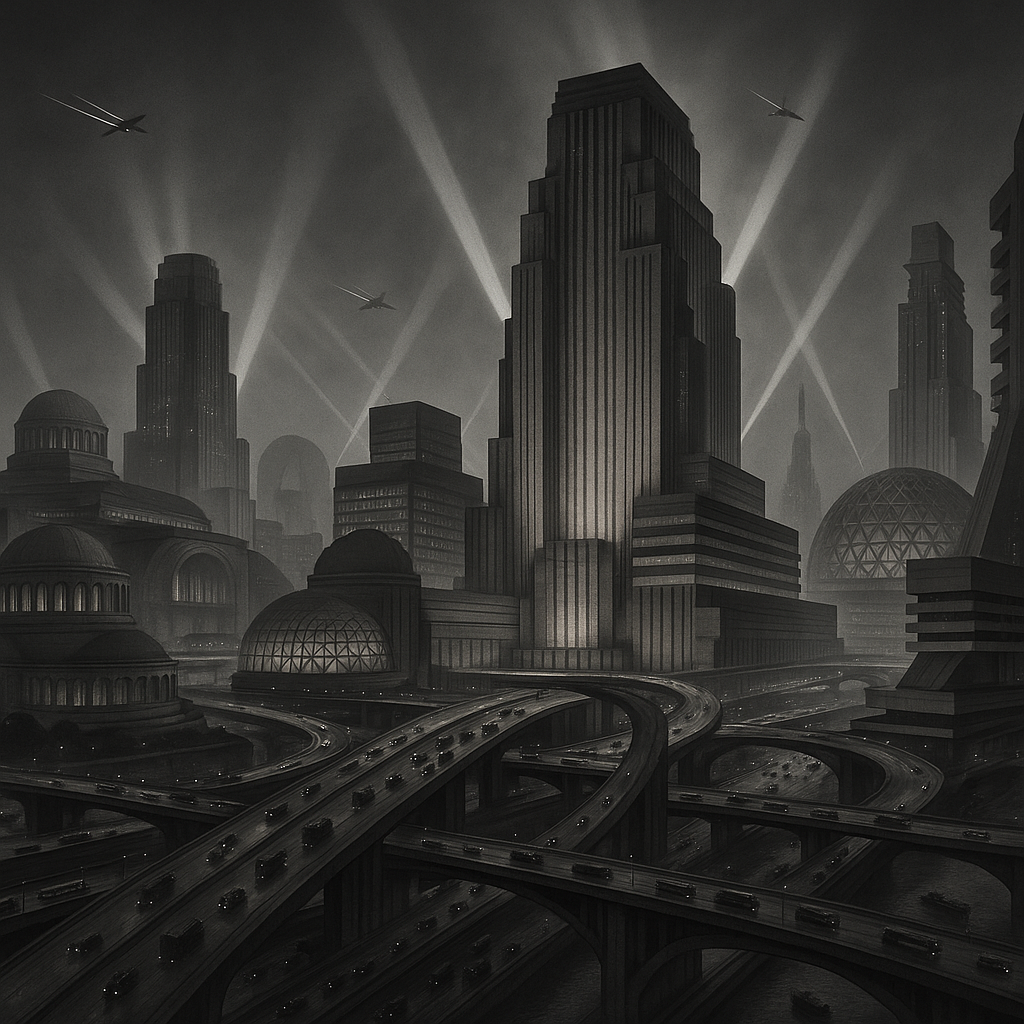The Metropolis of Tomorrow de Hugh Ferriss
Principais características
Prompt positivo: Ultra-detailed 8K architectural visualization, eye-level perspective of The Metropolis of Tomorrow by Hugh Ferriss, 1929. A visionary city that embodies acceleration, movement, and the rhythm of progress. The urban fabric is defined by a monumental density of buildings — towering megalithic structures that fuse a variety of architectural styles across historical periods. The skyline is sculptural and dramatic, with powerful verticality emphasized by deep contrasts of light and shadow. The atmosphere is cinematic and moody, with soft fog and ambient light amplifying the chiaroscuro effect, echoing Ferriss’s original charcoal renderings. Architectural silhouettes rise in rhythmic sequences, evoking a sense of overwhelming scale and futuristic grandeur. The city is structured around three primary hubs: the Business Center, the Center for Science, and the Center for Arts and Industry — each articulated with distinct massing and character. Grand axial boulevards connect these cores, carving through the dense architectural landscape and organizing the urban form. Rendered with photorealistic textures — concrete, metal, glass — under atmospheric lighting conditions, the image evokes a speculative, vertical utopia that captures the ambition, complexity, and awe of early 20th-century futurist urbanism.
Prompt negativo: Low resolution, daylight or flat lighting, colorful or playful palette, post-apocalyptic decay, chaotic layout, futuristic sci-fi buildings, fantasy elements, asymmetry, nature-dominated scenes, rural settings.
Imagens produzidas pelo Chat GPT a partir de entradas de texto
Características formais
Prompt positivo: Ultra-detailed 8K architectural visualization, eye-level perspective of The Metropolis of Tomorrow by Hugh Ferriss, 1929. The city is composed of a variety of architectural forms and typologies, combining expressive massing with visionary planning. At its core stand three monumental structures — each symbolizing Business, Science, and the fusion of Art and Technology. Towering skyscrapers and high-rise structures dominate the skyline, characteristic of Ferriss’s dramatic vision. Architectural elements dedicated to Philosophy are crowned with domes, and a massive geodesic structure punctuates the urban composition, hinting at futuristic ideals. The city’s architecture reflects the avant-garde movements of the early 20th century, blending monumental scale with progressive expression. The towers are constructed with steel and glass — their translucent façades rendered visible through sweeping beams of searchlights that illuminate their forms with cinematic effect. Light and shadow interact with the built environment to emphasize verticality, depth, and scale. This speculative metropolis could be envisioned in any city striving toward modern, transformative ideals. The atmosphere is bold and visionary, with ambient haze, high-contrast lighting, and sculptural silhouettes that capture the spirit of modernist aspiration and architectural futurism.
Prompt negativo: Low resolution, organic or vernacular forms, fantasy or medieval architecture, colorful facades, rural scenery, chaotic or informal layout, nature-dominated environments, post-apocalyptic decay, bright daylight, contemporary minimalism.
Imagens produzidas pelo Chat GPT a partir de entradas de texto
Características de Infraestrutura de Mobilidade
Prompt positivo: Ultra-detailed 8K architectural visualization, eye-level perspective of The Metropolis of Tomorrow by Hugh Ferriss, 1929. The city is portrayed as a vibrant and dynamic urban machine, where constant motion defines the atmosphere. Automobiles populate the streets, grand avenues, and elevated viaducts, generating a steady flow of traffic across multiple levels of infrastructure. The city’s large esplanades, wide boulevards, and monumental overpasses create a sense of layered complexity and forward momentum. High-speed roadways emerge from a dense, multi-tiered network of overlapping highways and ramps, reflecting a futuristic vision of seamless urban connectivity. Above, airplanes traverse the skies, their paths intersecting with beams of light and architectural silhouettes. In the bay, boats and large ships move through the water, contributing to the city’s intense flow of activity. This vision captures a metropolis in perpetual motion — a mechanical and architectural symphony of speed, elevation, and modern ambition. Rendered with photorealistic detail, the scene features steel, concrete, and glass structures, illuminated by ambient lighting and deep shadows, emphasizing Ferriss’s signature contrasts and monumental urban rhythm.
Prompt negativo: Low resolution, static or empty environments, fantasy or post-apocalyptic elements, minimal traffic, rural or natural landscapes, disorganized layout, bright daylight, soft colors, lack of infrastructure or movement.
Imagens produzidas pelo Chat GPT a partir de entradas de texto
Características Espaciais e Funcionais
Prompt positivo: Ultra-detailed 8K architectural visualization, eye-level perspective of The Metropolis of Tomorrow by Hugh Ferriss, 1929. The city is structured around three monumental architectural cores, each with a distinct formal identity. The Center for Arts and Industry is defined by a bold composition of horizontally layered planes, evoking a sense of mass and institutional strength. The Business Center, located at the convergence of monumental avenues and urban axes, rises as a stepped tower with prominent vertical friezes — a sculptural embodiment of corporate power and order. The Center for Science features a dynamic architectural language: large interconnected building blocks linked by glass-enclosed corridors and skybridges, symbolizing innovation, transparency, and progress. This core expresses movement and experimentation through volumetric variation and material contrast. Residential buildings are located at the city’s cantilevered edge, composed of apartment towers projecting outward from the elevated terrain — suspended and commanding, reinforcing Ferriss’s fascination with verticality and structural drama. Rendered in moody lighting with photorealistic materials — concrete, steel, and reflective glass — the city radiates monumental scale, cinematic atmosphere, and utopian ambition. The chiaroscuro interplay of shadows and light highlights the formal power and symbolic clarity of each urban core.
Prompt negativo: Low resolution, unstructured or organic architecture, post-apocalyptic scenery, rural elements, bright daylight, colorful tones, whimsical or fantasy aesthetics, nature-dominated environments, asymmetry, soft minimalism.
Imagens produzidas pelo Chat GPT a partir de entradas de texto
Todos os prompts anteriores.
Prompt positivo: Ultra-detailed 8K architectural visualization, eye-level perspective of The Metropolis of Tomorrow by Hugh Ferriss, 1929. A visionary city that embodies acceleration, movement, and the rhythm of progress. The urban fabric is defined by monumental density — towering megalithic structures that fuse architectural styles from multiple historical periods. The skyline is sculptural and dramatic, with commanding verticality emphasized by deep contrasts of light and shadow. The atmosphere is cinematic and moody, with ambient haze and focused lighting enhancing the chiaroscuro effect, echoing Ferriss’s original charcoal renderings. Rhythmic sequences of architectural silhouettes rise in overwhelming scale, evoking grandeur and a futuristic urban symphony. The city is structured around three monumental cores: the Business Center, a stepped tower with prominent vertical friezes at the convergence of grand boulevards; the Center for Science, composed of large, interlinked volumes connected by glazed corridors and elevated walkways, symbolizing innovation and transparency; and the Center for Arts and Industry, marked by bold horizontal planes and institutional mass. Additional architectural elements include domed buildings dedicated to Philosophy and a massive geodesic structure, representing futuristic ideals. Residential towers are located on cantilevered edges of elevated terrain — suspended and striking, reinforcing Ferriss’s fascination with structural drama and verticality. The city’s movement is constant and multi-layered: automobiles populate wide avenues, elevated highways, and monumental viaducts. High-speed roads emerge from a dense, overlapping mesh of multilevel infrastructure. Boats and ships move through the bay, while airplanes cross the sky, interacting with the city’s radiant light beams. Constructed with photorealistic textures of concrete, steel, and glass, the scene emphasizes mass, rhythm, and utopian scale. The ambient lighting, sculptural forms, and axial organization express a speculative vertical utopia — bold, organized, and rooted in the modernist ambition to reshape the future of urban life.
Prompt negativo: Low resolution, fantasy elements, sci-fi architecture, post-apocalyptic ruin, colorful facades, soft minimalism, chaotic layout, nature-dominated environments, rural settings, unstructured or organic design, daylight without contrast.
Imagens produzidas pelo Chat GPT a partir de entradas de texto
